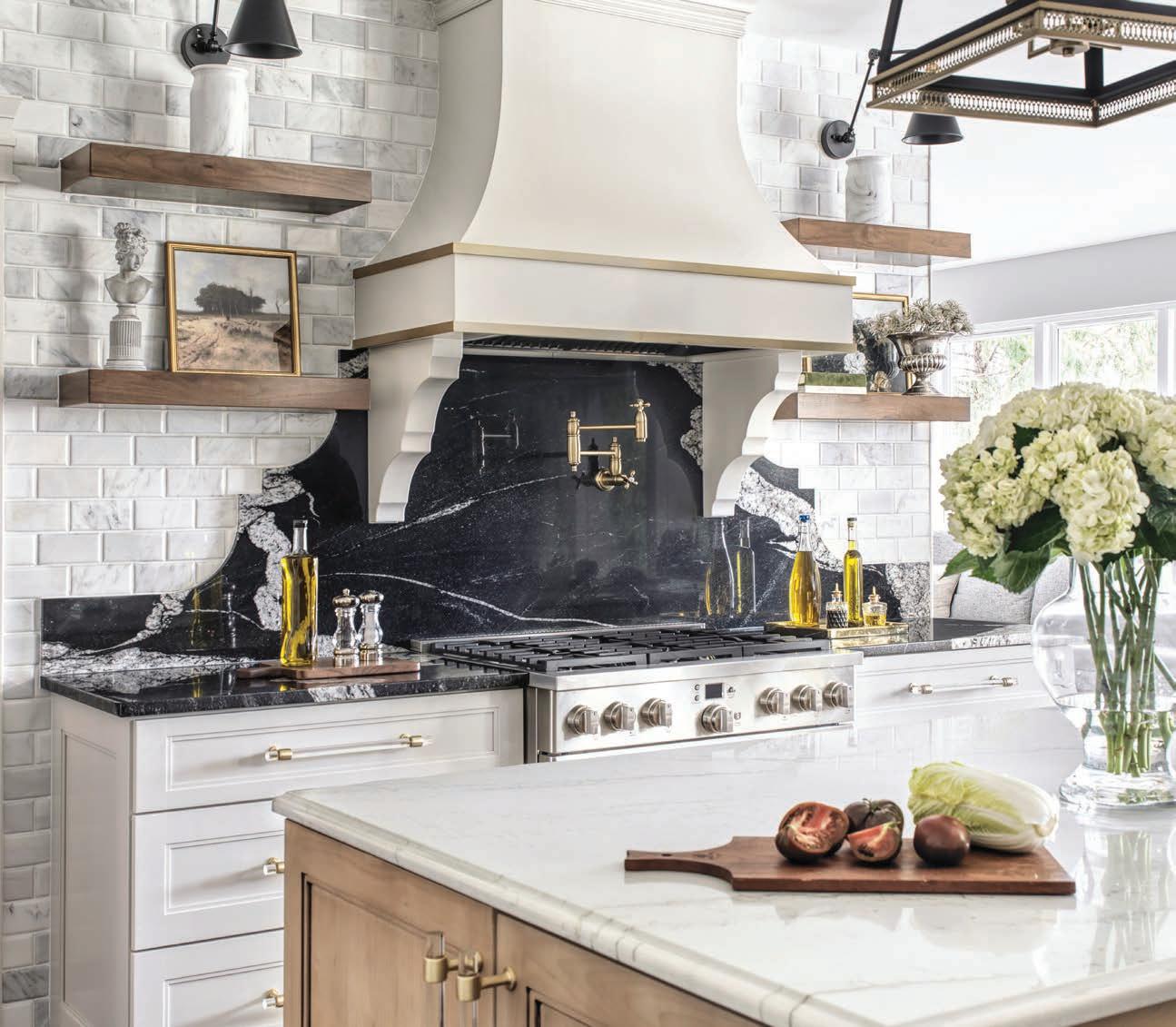







May/June 2023
65
on the cover:
12 Chef, Chocolatier and Now Cannabis Escoffier
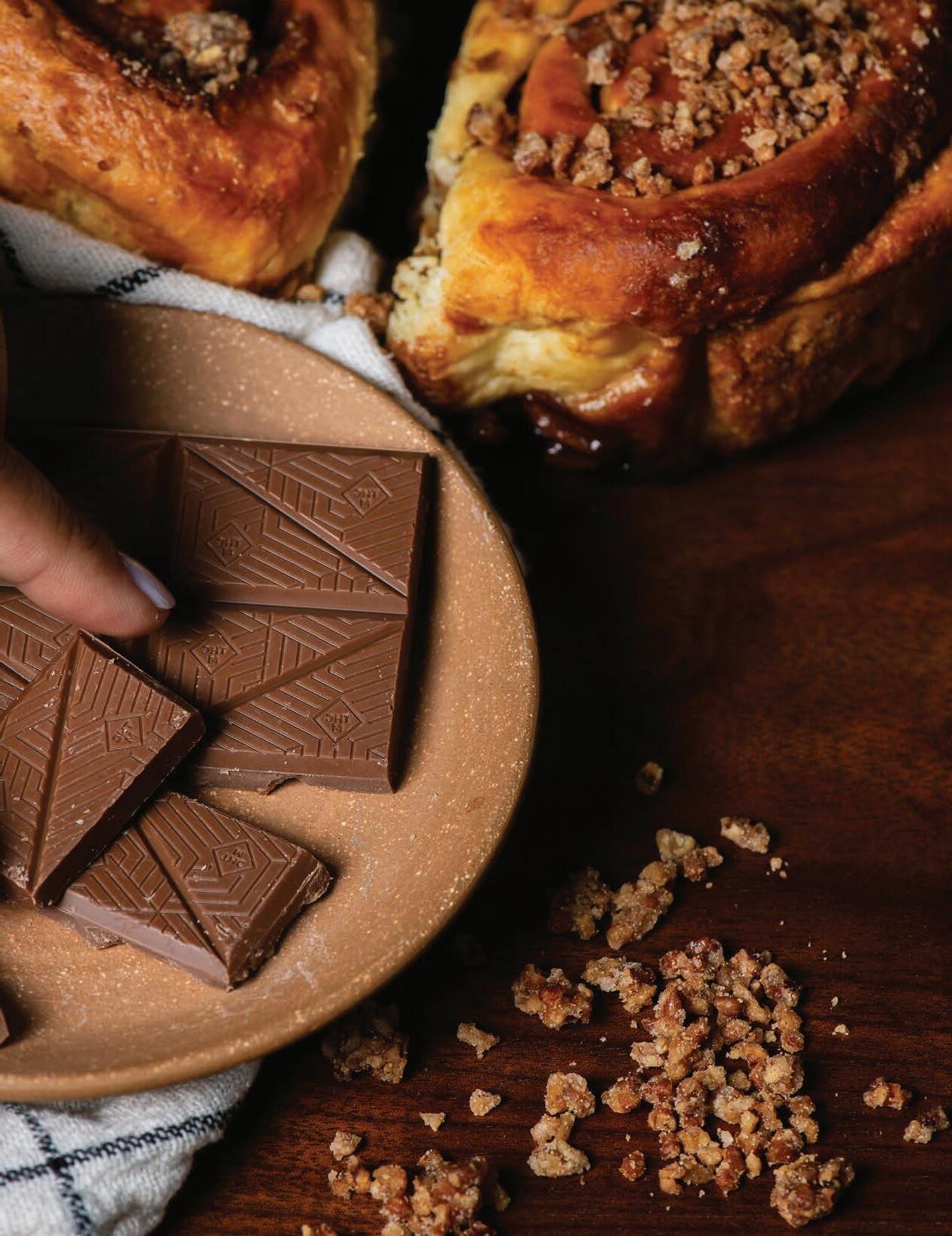
18 Raising a Glass for Good
20 Homecoming
26 Old Meets New
33 The Art of Purpose - Driven Tranquility
36 Love & Stay
40 A New New York State of Mind
46 Ooh La La!
50 Have Jewelry will travel
54 DIVINEO
56 Here Comes the Sun
62 Driven by Perfection
65 A Dad’s Influence on His Designing Daughter’s Fashions

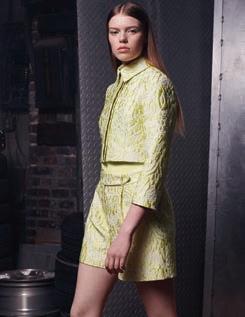
70 Dena Ladd’s Love of the Leaf
74 The Message is the Medium: Anamorphic Sculpture
82 I’ll Have What He’s Having
12
In celebration of Kit Heffern’s 50th anniversary at Elleard Heffern, the local Saint Louis fine jewelry company is honoring some of the city’s most dynamic women.
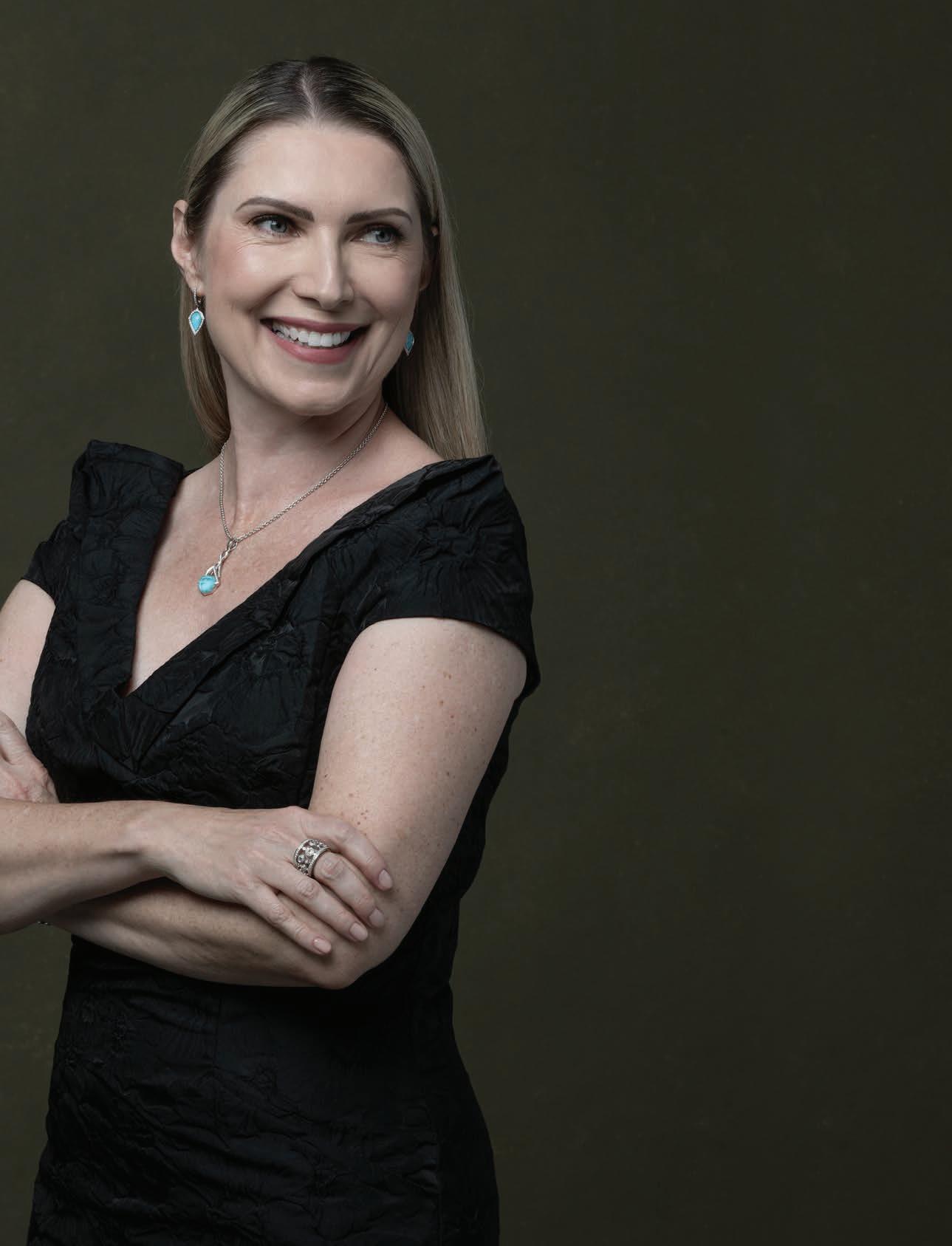
ELENA PARKER
Associate General Counsel of BJC Healthcare

Originally from St. Petersburg, Russia
Immigrated to Saint Louis with $80 in her pocket
Graduate degree in psychotherapy
Valedictorian of her law school class at Saint Louis University
Immigrant and healthcare supporter
Styles with Elleard Heffern


With all the news of violence, political in-fighting, declining economic opportunity, and a clash of ideologies in St. Louis and worldwide, it’s no surprise that some of our best and brightest leave our community each year for greener pastures. However, as our readers know, we choose to focus on the people and things which make our city great. We leave the bad news to the hardhitting journalists and promote the people who have come here – stayed here – and are making significant contributions to a better, more equitable, more dynamic, and more forward-thinking future for St. Louis. Keep turning the pages for plenty of that.
In this issue, I have featured Audra Noyes Herndon who trained under top names in luxury fashion from New York City to Paris, including Alber Elbaz at LANVIN, John Galliano, and Ralph Lauren. She launched her namesake brand, AUDRA, during Paris Fashion Week in 2014 and moved to St. Louis to incubate her company at the Saint Louis Fashion Fund. Since then, Audra fell in love with St. Louis, and loves building her business – which is being covered by all the top fashion writers – and life in St. Louis. With 19 collections under her belt and the production of couture, ready to wear, made-to-measure, and fully custom bespoke tailoring for women, Audra is still flying under the radar despite her retail showroom being in the heart of Ladue and her clothing being worn by A-listers here and worldwide.
We have covered Ben Poremba’s restaurants and rise to fame in the culinary world previously in these pages, but when he told me of his latest venture, Deli Divine, an authentic New York kosher-style deli on the ground floor of Maxine Clark’s Delmar Divine in the East Loop, I knew I had to drop everything and pay him a visit. I grew up in a deli family and have been craving a top-tier deli to open in St. Louis. In fact, I almost did it myself. While not our typical foodie story, there are so many things that appeal to me about what he’s doing. He’s chosen to locate his new concept in an old Jewish neighborhood (where most St. Louisans don’t travel), painstakingly focusing on the best of Jewish deli culture while satisfying his yearning to do right by his Israeli Jewish upbringing and expanding the offering of quality ethnic food in a transitional neighborhood being reinvented by another pioneering St. Louisan, Maxine Clark. If you have secretly wished for a Barney Greengrass, Russ & Daughters, or Katz’s to open here, this should be as good as it gets. I have written about the burgeoning cannabis market in Missouri and Illinois before, but with the expansion of cannabis laws to include recreational sales, some really adventurous types are innovating in ways few imagined just a few months ago. Dave Owens, who was a highly regarded chef in the food scene here, moved in 2008 to Bissinger’s to head up chocolate making, especially its high-end truffles. Fast forward, Owens is now in charge of product development at Proper Cannabis and is making the best cannabis-infused gummies, chocolates, and soon an entire menu of cannabis-infused treats and fine dining inspirations. Borrowing a line from the University of Texas at Austin…”what starts here changes the world.” And Owens is doing just that. If you partake, you may want to try these.
Hot on Owens’ heels, Dena Ladd was asked by the late Dr. William Danforth to be the executive director of The Missouri Coalition for Lifesaving Cures, now called Missouri Cures. The goal of the organization is to protect and promote medical research in the state of Missouri. While many of us are enamored with celebrities or sports stars, Ladd is in awe of researchers - the people who dedicate their lives to finding a cure for cancer, Parkinson’s, and other devastating diseases. Since leaving Missouri Cures last year, Ladd has been advising organizations on government and community relations and founded the Missouri Cannabis Trade Association (MOCANN). She is now the chair of the board, a role she was hesitant to take on at first. Ladd’s latest venture ties her experience in fashion with her passion for research. She launched a jewelry and accessories line in gold and silver featuring delicate cannabis leaves called Flora Jaine. Don’t miss this story about Ladd and discover all the things that keep her so engaged and in St. Louis.
As a dedicated art collector, I am always finding new artists to follow which is how I discovered Connor Wright. While watching the news one night I saw an installation he did with guitar picks which was bought by a high-profile collector for a pretty penny. It turned out that Connor was still in college, not really studying art, and just saw the world in a very unique and compelling way. He graduated from the University of Pennsylvania – no slouch – and is now accepting art commissions from around the globe. I just saw his latest cityscape of St. Louis, commissioned by Saint Louis Bank, which is hanging in Ladue. Connor grew up in St. Louis and although he now lives in New York, he is back here regularly.
Finally, I am working on a big feature for our next issue, July/August, on 21c – the museum hospitality company, founded by heirs of the Brown-Forman Corporation (think Woodford Reserve and Jack Daniels), which is opening downtown in the former YMCA Building at 15th and Locust Streets. With luxury accommodations, two new restaurants, two ballrooms, and a full-fledged art museum (no joke), this property may be the coolest thing to open in St. Louis this year. While most hotel operators wouldn’t even consider investing in this part of St. Louis, 21c is attracting former St. Louisans back to run the hotel and be the change needed downtown.
Just when I thought St. Louis was in a bad place and getting worse, I continue to discover greatness wherever I look. Join me on this quest to find the great in our region. As Ted Lasso would say, you’ve gotta “BELIEVE!”
Craig M. Kaminer, Publisher craig@slmag.net

PUBLISHER
Craig Kaminer craig@slmag.net
PRINT CONTENT EDITOR
Lou Ann Wilcox louann@slmag.net
DIGITAL CONTENT EDITOR
Grayling Holmes graylingis@gmail.com
ADVERTISING
Cortney Vaughn cortney@slmag.net
Rachel Sokolich rachel@slmag.net
Karen Palmer Bland karen.palmer.bland@gmail.com
CONTRIBUTORS
Writers
Courtney Scott
J. O’Brien
Design
Stephanie Grateke
Photography
Alise O’Brien
Carmen Troesser
SOPHISTICATED LIVING MEDIA
Eric Williams
Bridget Williams
Greg Butrum
Jason Yann


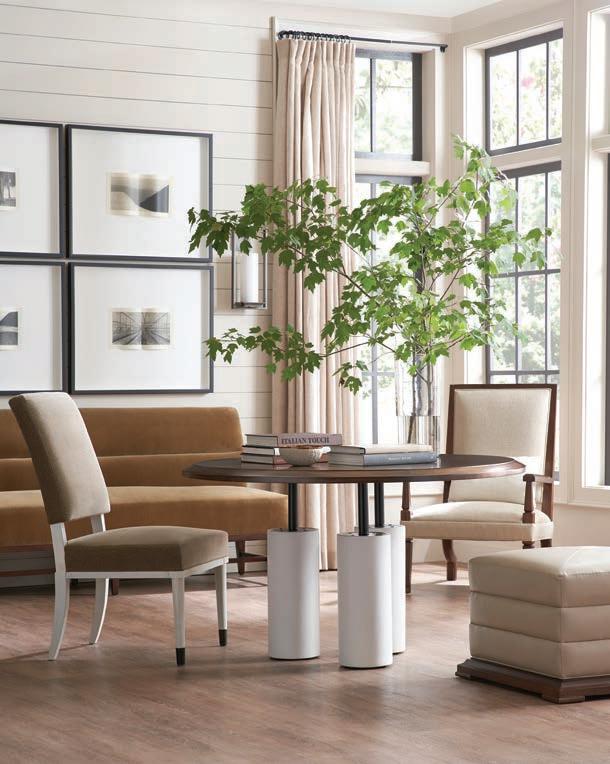
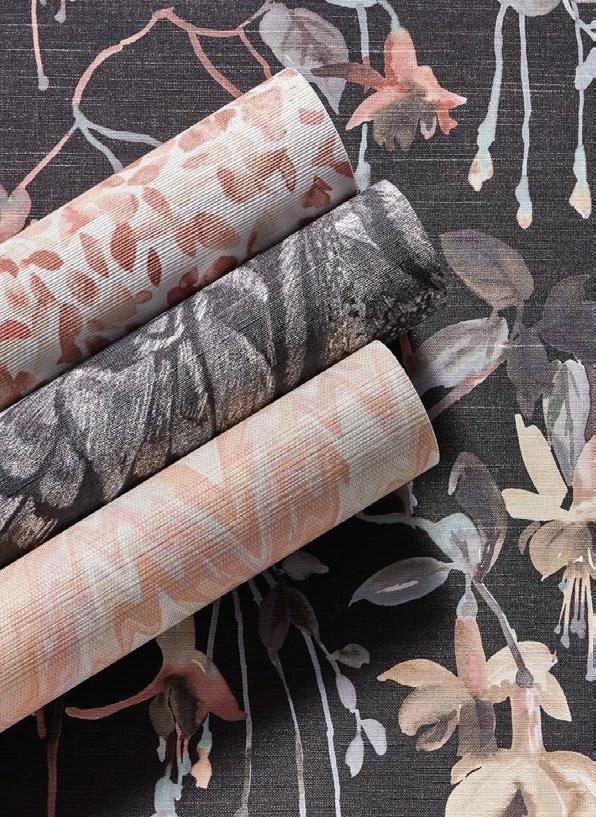
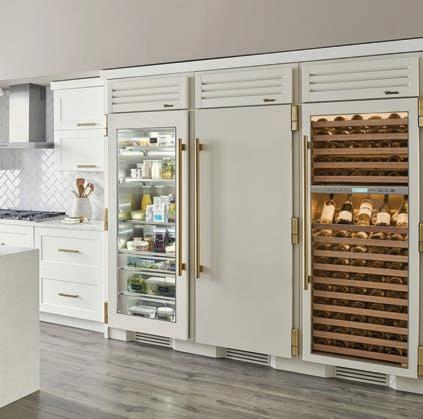
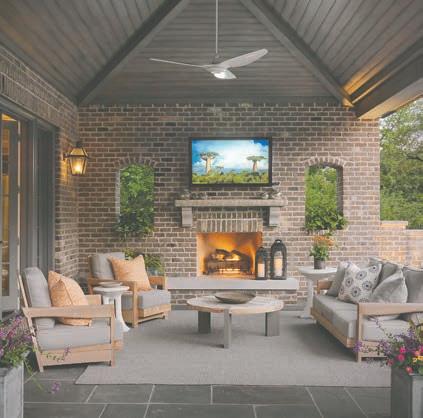


You may know Dave Owens from his times as a chef at Cardwell’s and Terrene, or as the Chief Chocolatier at Bissinger’s, but it may be his role as Director of Culinary at – of all places – Proper Cannabis, a locally owned and operated manufacturer and dispenser of medical and recreational cannabis products, that will forever change how you think of him and his expert confectionary skills.
On the surface, Owens is a passionate chef type with great tattoos and intense chef demeanor reminiscent of Gordon Ramsay. But it only takes a few minutes discussing cannabis gummies and chocolate bars to realize that he has plans to revolutionize the category with gourmet ingredients, luxury flavor profiles, and innovative tasting experiences that few consumers have experienced before. And he has the chops to do it.
Creating these products requires the ability to source unique flavors. It also requires the skills of a chef to combine them with THC and CBD to taste great and produce the desired result. “We source the finest European chocolates and the most flavorful real fruit purees from around the globe…no artificial flavors - just as the honey bee craves…and have our own premium cannabis distillate. At our state-of-the-art facility in St. Louis, we cultivate premium cannabis, process it into a pure, tasteless distillate in house, then pass it on to our culinary team for their creations,” explained Owens.

Owens continued, “I think what truly sets us apart is our quality ingredients. There’s plenty of people who are using real fruit but the fruit purees we use are imported from all over the world. If you go into any fine pastry shop around the country, that’s the kind of puree that they’re using. And our chocolate is all European chocolate. I think that’s really the angle – that we source the best ingredients to make the best tasting products that we can. And it puts us in a bit of different position than some other folks.”
While Proper Cannabis produces a wide array of products from flower to extracts, it’s their marijuana-infused edibles, sold under the Honeybee label, that caught my attention. Their website says, “Inspired by the Missouri state insect, Honeybee Edibles are made for those who know how to enjoy the sweetness that life brings them.” So I met with Dave, bought some of the products he recommended, and have sampled them over the last month or so.
The bottom line is Honeybee Edibles taste better than anything else available. If you hate the way cannabis gummies taste, you have to try Dave’s gumdrops. Just look at the flavors of the gumdrops and the chocolate bars. Nothing run-of-the mill here. And better yet, they aren’t any more expensive than the products that aren’t as enjoyable. But don’t be tempted to eat more than the recommended dose.

No doubt someone reading this is thinking that the goal of ingesting is not the taste but the resulting sensation from the THC. True, but the Honeybee products are far more enjoyable and perfect for someone who wants to partake without gagging.
In the chocolate department, you may want to try any of these top sellers (many of which are available in standard 100 mg bars or the 300 mg high-potency variety), including: dark chocolate salted brownie batter, milk chocolate sticky bun, milk chocolate peanut and pretzel bars, caramelized white chocolate strawberry crunch, milk chocolate toasted coconut and sea salt, dark chocolate espresso + caramel + toffee, white chocolate banana + candied black walnut, and 60% dark chocolate candy cane crunch. Where to start?
For gumdrops, the flavor profile and mouth feel are unlike any others I have tried. Flavors include grapefruit calamansi lime, passionfruit guava, sour watermelon passionfruit, blood orange strawberry, black cherry cola, sour raspberry lemonade, sour cherry lime, and mango chili with a mix of ripe mango with guajillo peppers and ghost chiles.
But back to the chef. You can’t make delicious confections without a chef and Proper Cannabis has one of the best. “The

opportunity for me to get to do what I love while helping those who can benefit is really a treat,” he explained.
So how did Dave go from being a chef, to a chocolatier, to the consummate cannabis Escoffier? “Once I knew Bissinger’s was going to sell, I mailed a resume to everyone in the metro area who was awarded the manufacturing license, not knowing who they were or what they were gonna do. I just used the address they had listed with the state. My cover letter clearly stated why I thought they should hire me,” Owens recalled. Of the 25 resumes he sent out, 23 came back to him as undeliverable. Except of course Proper Cannabis. “I wanted to continue making confections and it just happened that the owners liked that idea too. It’s not the restaurant life – which some days I miss a great deal. Most days end at five o’clock and I go home. This affords me the opportunity have a good life, take care of my family, and provide a really great product for people here in the state of Missouri.”
Owens admits, “We’re still trying to figure out who is our core customer. From my experience of going to our stores, it has changed since recreational use has been legalized. There’s the cannabis aficionado, who’s maybe really into concentrates. There’s
the flower aficionado and then there’s the people who really enjoy edibles. The edibles are a really good introduction for a lot of people who don’t want to smoke.”



What’s next? Dave thinks the cannabis beverage category is going to explode. “There’s only a couple of players now, but it just makes a lot of sense. When someone picks up a beverage that has THC in it, they’re looking for something to fill that space of alcohol. It needs to be balanced, not overwhelming with too much THC so that you can drink a few of them, much like the gumdrops and the chocolates, where you can have a few cans of seltzer or mocktails.”
“Something else we make in the kitchen is a microdose mint. That was really out of my wheelhouse coming from Bissingers’s making chocolate and gummy confections. Mints were a whole new thing to learn about. I understood how they were made, but I’d never made them. Once we figured it out we were able to make a great tasting, great selling product, particularly for people who are looking to just get an introduction to cannabis. They’re only two and a half milligrams. Some are even lower with a higher ratio of CBD. It’s great for folks who are new to cannabis and looking to try something to help them get through
the day.” Owens added that Proper also has a low-dose Honeybee gumdrop option in sour cherry lime as well as a regular dose gummy to help aid sleep called Goodnight.
Expect some brands to specialize in things like gourmet cannabis. Proper is currently the leader in this category, and with a chef like Owens at the helm of product development, he is working on other gourmet treats. “We have three upcoming flavors,” he teases. “Peaches and cream gumdrops, grape soda gumdrops, and a filled peanut butter and jelly chocolate bar. We’re also bringing mini-bags to the market, which will each have five gummies in them instead of 20.”
There will be a day when culinary cannabis is a featured item on restaurant menus, catering offerings, and dinner parties. Rumor has it that Dave is creating some cannabis-infused menus and various dishes which could be served at a dinner party for when it’s legal to consume cannabis in a public place. While he didn’t want to go into too much detail, Owens is working on this now and will introduce new products when the time is right and the supply catches up with the demand. Until then, there are many things to try which will keep you happy, pain free, and sleeping well. Cheers. sl
Sour watermelon passionfruit gumdrop. Look for the Honeybee brand.


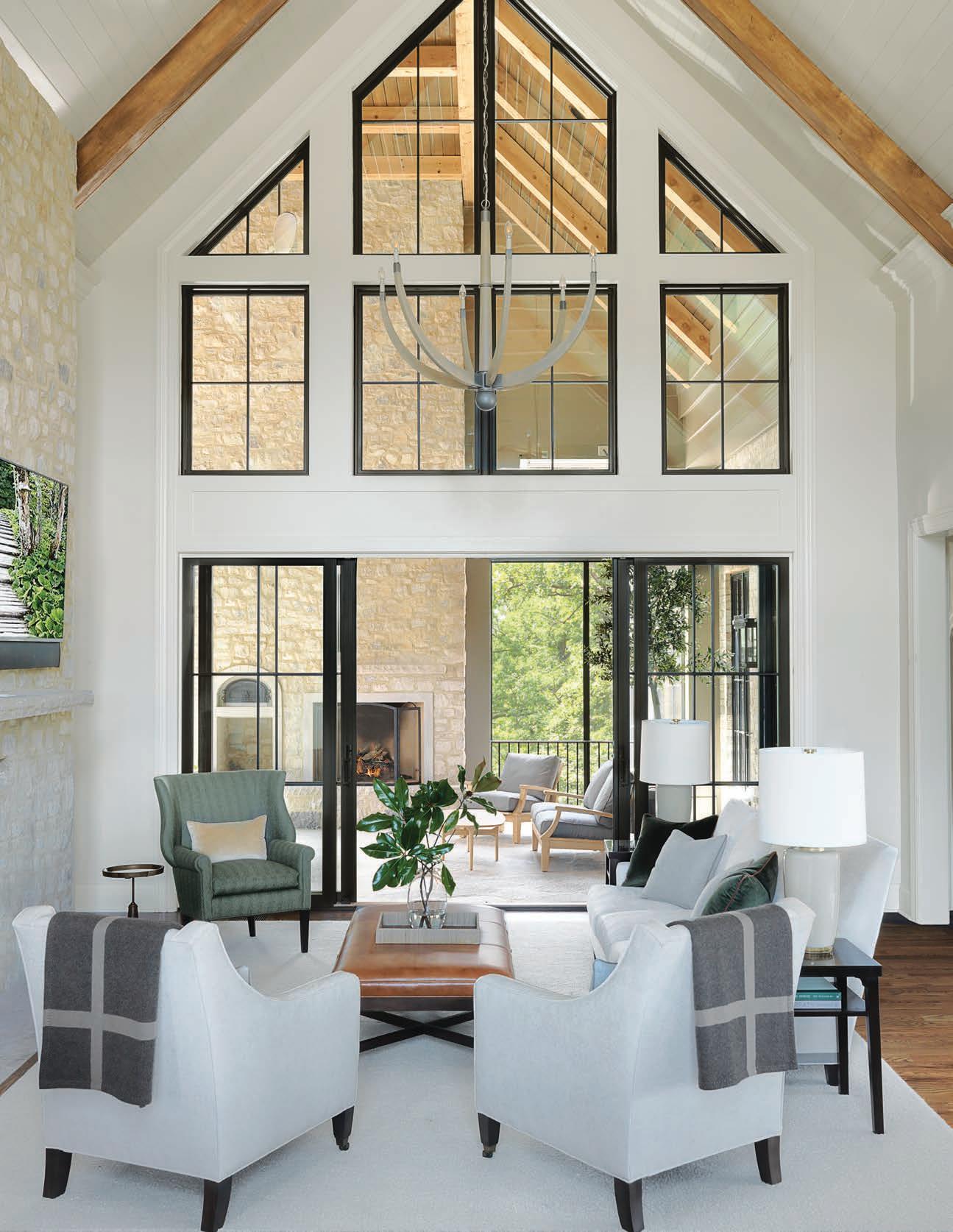


In 2010, Rutgers University football star Eric LeGrand’s life changed when he sustained a spinal cord injury at his C3 and C4 vertebrae during a fourth-quarter play at MetLife Stadium. Determined to beat the initial grim prognosis, Eric shattered all expectations for his recovery and rehabilitation as a Reeve Foundation’s NeuroRecovery Network participant. He took part in a rigorous rehabilitation regime, including locomotor training, to re-teach his body how to walk and improve his quality of life. To Eric, it is not a matter of whether he walks again but when.
Eric has since regained movement in his shoulders and experienced improvements to his overall health that have allowed him to graduate from Rutgers and become an author, a sports analyst for ESPN, Sirius, the Big Ten Network, and Rutgers radio, a Sports Illustrated and ESPY Award winner, and a much sought after motivational speaker, who has given a voice to the paralysis community and mobilized support for critical initiatives, policies, and cutting-edge research.
Harnessing the national spotlight his injury attracted, Eric launched Team LeGrand in September 2013 as a fundraising arm for the Christopher & Dana Reeve Foundation, raising nearly $2 million for spinal cord research in the last decade. “We are grateful for Eric’s long partnership with the Reeve Foundation and his dedication to carrying forward Christopher Reeve’s legacy and dreams for the spinal cord injury community – a world of empty wheelchairs,” said Colleen Coppla, Chief of Development at the Christopher & Dana Reeve Foundation. “With a resolute commitment to his passions, Eric has become a leading entrepreneur, and we’re thrilled to be able to support and benefit from his ventures. Eric LeGrand Bourbon helps to achieve Eric’s goal of getting us to the endzone – cures for spinal cord injury and paralysis – and we couldn’t be more excited to be involved.”
The launch of Eric LeGrand Kentucky Bourbon is Eric’s latest entrepreneurial venture, having debuted the clothing brand Shop Fifty Two in 2019, a coffee brand in 2021, and co-founding Knight Society, a Rutgers collective with former Rutgers basketball player Geo Baker in 2022.
Brian Axelrod, Eric’s partner in his latest business venture, is a twenty-year veteran of the spirits industry and no stranger to celebrity collaborations, having partnered with Conor McGregor and his team to launch Proper No. Twelve Irish whiskey, which was acquired by Becle in 2021. Before that, Brian worked on D’USSE Cognac as the Brand Director and Commercial Director for Champagne Armand de Brignac for over six years alongside Jay-Z and Desire Perez.
More than just business partners, Eric and Brian are also committed to supporting those living with and impacted by paralysis by finding the cure for spinal cord injuries. To facilitate this, they have pledged to donate $5.20 of every case sold of Eric LeGrand Bourbon to the Christopher & Dana Reeve Foundation. Fifty-two was Eric’s number at Rutgers.
“Teaming up with Eric to create a product that gives back to those impacted by paralysis has truly been such an eye-opening business endeavor,” said Brian. “It feels good knowing that we have developed a high-quality bourbon that has the potential to change someone’s life.”
Eric LeGrand Bourbon is a Kentucky Straight Bourbon, distilled in Owensboro, Kentucky, using quality heartlandgrown corn, limestone purified water, the freshest rye, and barley available then bottled in Bardstown, Kentucky. This premier whiskey, aged no less than two years in perfectly charred oak barrels, boasts a warm nose and a smooth, crisp finish.
“My recovery journey has mirrored that of my bourbon. Both take precision, patience, and trust in the process,” said Eric. “Eric LeGrand Bourbon offers a way for those who are living with paralysis and those who are not impaired by it to enjoy sipping on a quality bourbon while coming together to support a foundation that gives back to anyone impacted by this condition.” sl

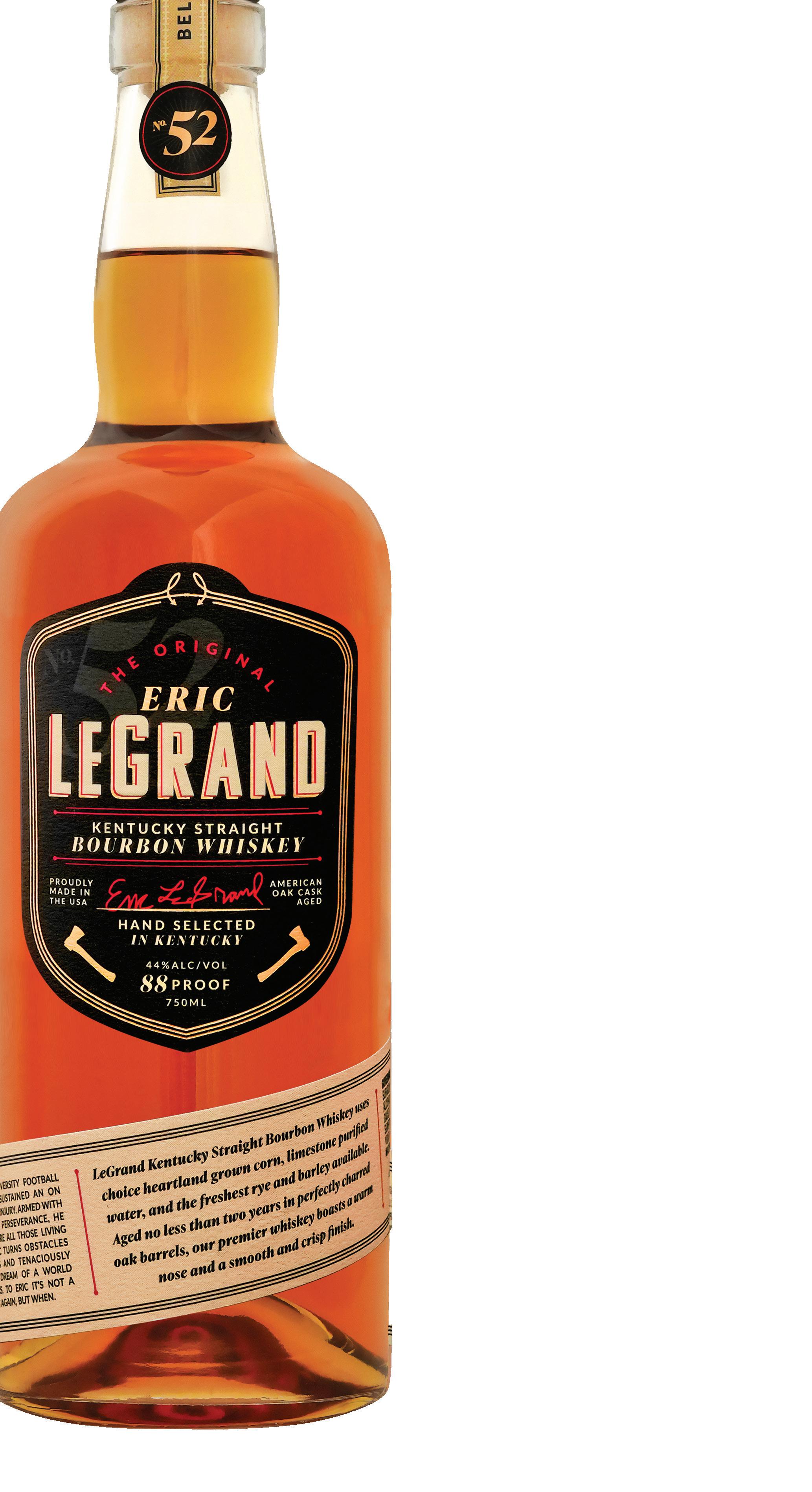
A new act began at COCA when Indigo K. Sams took on the role of president and CEO this past February. Indigo’s warm and welcoming demeanor, along with her passion for the arts and the organization, make her a great fit. Sams is just the third person to take on the leading role at COCA, following former Executive Director Kelly Pollock and Founding Executive Director Stephanie Riven.
Sams is no stranger to COCA. Having worked there for 16 years, starting in the early days, she is part of its DNA. She began while in college, working as an intern for Stephanie Riven. Back then, COCA hosted a lot of performing arts organizations and visual artists that used it for studio space. “There was so much great energy in this building with local artists coming and going,” recalls Sams. “Over time, the interest in dance classes grew and grew. Eventually, this place was hopping full of kids running to different classes, and the number of teachers increased as well.”
At the end of that initial summer internship, Riven asked Sams to stay on as her assistant since there was so much work to be done. Sams wore many hats, handling registration for classes, facility operations, and even helping in marketing. “Whatever needed to be done, the whole team that was here pitched in to do everything.”
Over time, as the organization began running at full steam, the team was able to break into specific roles. That is when Sams started her resource development career at COCA, mostly working to grow membership. She began working on the programming side as well and eventually created a scholarship program and established a protocol for awarding the scholarships.
Sams, not one to shy away from rolling up her sleeves and completing any task, even drove kids from all over the city to classes at COCA. This need for transportation eventually led to a passenger bus with a hired driver. To this day, you can see the COCA bus throughout town.
“The joy and the bustling and the energy of the arts took over,” Sams said. By the time Sams left her long stint at COCA, she was the Director of Outreach. This meant she oversaw all external relationships and work in schools and the greater community, as well as the scholarship program. She was even overseeing the dance companies.
Sams left COCA to take a role at the Boys and Girls Club of Greater St. Louis. During her 17 years with the organization, she held three different vice president positions. When asked

what accomplishments she was most proud of during her tenure there, she responded, “It would be the response that the Boys and Girls Club made to the community of Ferguson.” She specifically noted the building of the Teen Center of Excellence, a $12.4 million facility offering youth an array of after-school immersive educational programs.
“I was able to help develop what that was going to look like,” says Sams. “I am proud of the work that is being done there and I think the team there is amazing and committed to that community.”
Sams is also proud of how the organization branched out from just one location. “By the time I left, there were Boys and Girls Clubs in a lot of very important St. Louis communities, and also in Illinois with two locations as well as merging with Mathews-Dickey and the St. Louis Internship Program. I think that what’s important to the St. Louis community is how we can come together on like-minded work.”
When asked what some of her priorities are as she begins her new role at COCA, Sams made it clear that supporting the staff is important to her. “There is an amazing group of people who work here. I want to make sure that this organization stays peoplecentered,” she said. “Happy people make the work happy, and happy work makes the community happy.”
“The board and the staff here did a remarkable job developing a strategic plan that we are about two years into executing. A lot
of that plan is maximizing the utilization of this building; making sure everyone in the St. Louis area not only knows about COCA but has access to it,” stated Sams. She said that she will be focused on figuring out where the barriers are and how to overcome them.
Sams also wants to focus on maximizing the potential of the recently built state-of-the-art Catherine B. Berges Theatre. COVID put a damper on productions, but now that restrictions have decreased, Sams wants to broaden the audiences that come to see the great work being done on that stage. In addition, Sams is excited to expand the number of performance companies that partner with COCA.
She noted that, of course, it takes money to drive the mission and that she would like to see the endowment continue to grow so that the work could grow with it. “COCA has a beautiful reputation for taking good care of the dollars given by people who support this organization. We want to continue that legacy,” she said.
Spring 2023 has been a busy time at COCA and for Sams, as she saw the first production staged and the first COCAcabana of her new role – although by no means the first she has experienced in her career with COCA. She reminisced on how COCAcabana has grown from a smaller street party that took place on Trinity Avenue to what it is today, being touted as the best party in town. She said that COCAcabana is special because the joy of the mission is apparent in all aspects of the fundraising event.
“I love opening my office door and hearing the noise and excitement in the halls of COCA,” Sams said with a twinkle in her eye and a warm smile. “I love hearing the kids giggling as they are getting ready for pre-ballet and I get excited about walking the halls and hearing the parents chit-chat with each other as they watch their kids through the window. I love the enthusiasm I hear when the class is over and the teachers are saying, ‘thank you so much for coming to my class.’ That’s what I get excited about –just the pure joy that art can bring.”
Sams talked about students who used to attend classes in her early days who are now grown and still find a connection to COCA. She recently heard from a former student who, now in his forties and working in construction, decided to take up tap dancing again. This former student even formed a group that performs gigs on the side of his day job because it brings him joy. She loves the idea that it’s something that is so special it sticks with them throughout life. She also has been a part of helping former students become professionals in the arts. “But what I like about COCA is all the people who don’t become professionals in this space and use the art to become a better person.”
“The beauty of coming back is realizing how much it has evolved and changed and looking at the work differently,” said Sams. “Art is supposed to inspire thought and change, and it’s definitely still a living thing in this building.” sl

Summer is around the corner at Colonial Marketplace. With more than 20 unique boutiques, great eats, and best-in-class services, you can eat, shop, and experience—all in one place.
Cross-Back Seamed Performance Polo in Mineral Blue $68; Hybrid Shorts in Sand Dune $78




Summer special. 3 sessions. $59
B12 Injections - Increase energy levels, combat fatigue, speed up metabolism and help improve sleep patterns. $10 each
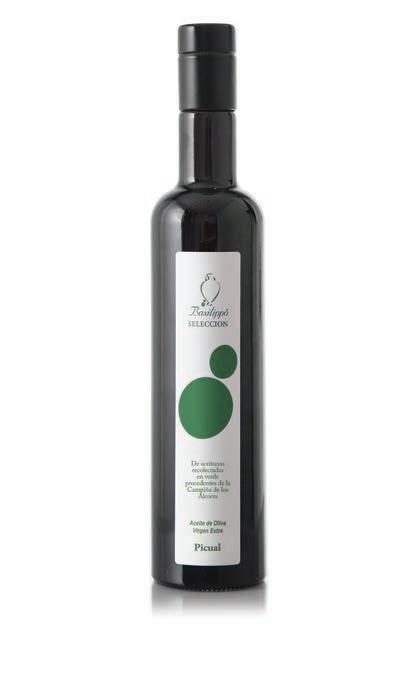

Classic cherry dress and cherry David suit in red, white, and blue tri-check. Dress $150. Suit $125


The Dutch baby filled with fresh strawberries and bananas. $15

Designed for fine, flat hair seeking
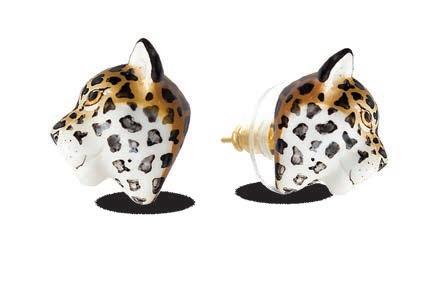


A perfect stack by Single Stone. Prices vary. Call for details

Saint Laurent Mini Lou Quilted Leather Camera Bag. $995


Absolute Athlete Drip $99
Basilippo Calidad
Gourmet Picual Extra Virgin Olive Oil. Imported, Sevilla, Spain. $33


Yaella sandal, available in four colors with chain-link statement detail and braided trim. $175

Support Doctors Without Borders/Médecins Sans Frontières when you purchase this lamp (includes Pure White Tea fragrance). $50

Moroccan Oil

Spa Line. $18-$30

Keep baby looking cool when the temperature rises in this 100% organic cotton piece. $46

Skylar Top Zinnia Eco Rib. $120
Lolita Bottom Zinnia Eco Rib. $112

The Paloma Sunglasses Black Jet. $72
The Pasta House Co. Salad Dressing. $3.50

TOMORROWLAND UNVEILS LIMITED EDITION SCENTED CANDLES
BY BAOBAB COLLECTION, A UNIQUE SCENT WITH NOTES OF PEAR, LILY OF THE VALLEY AND MOSS.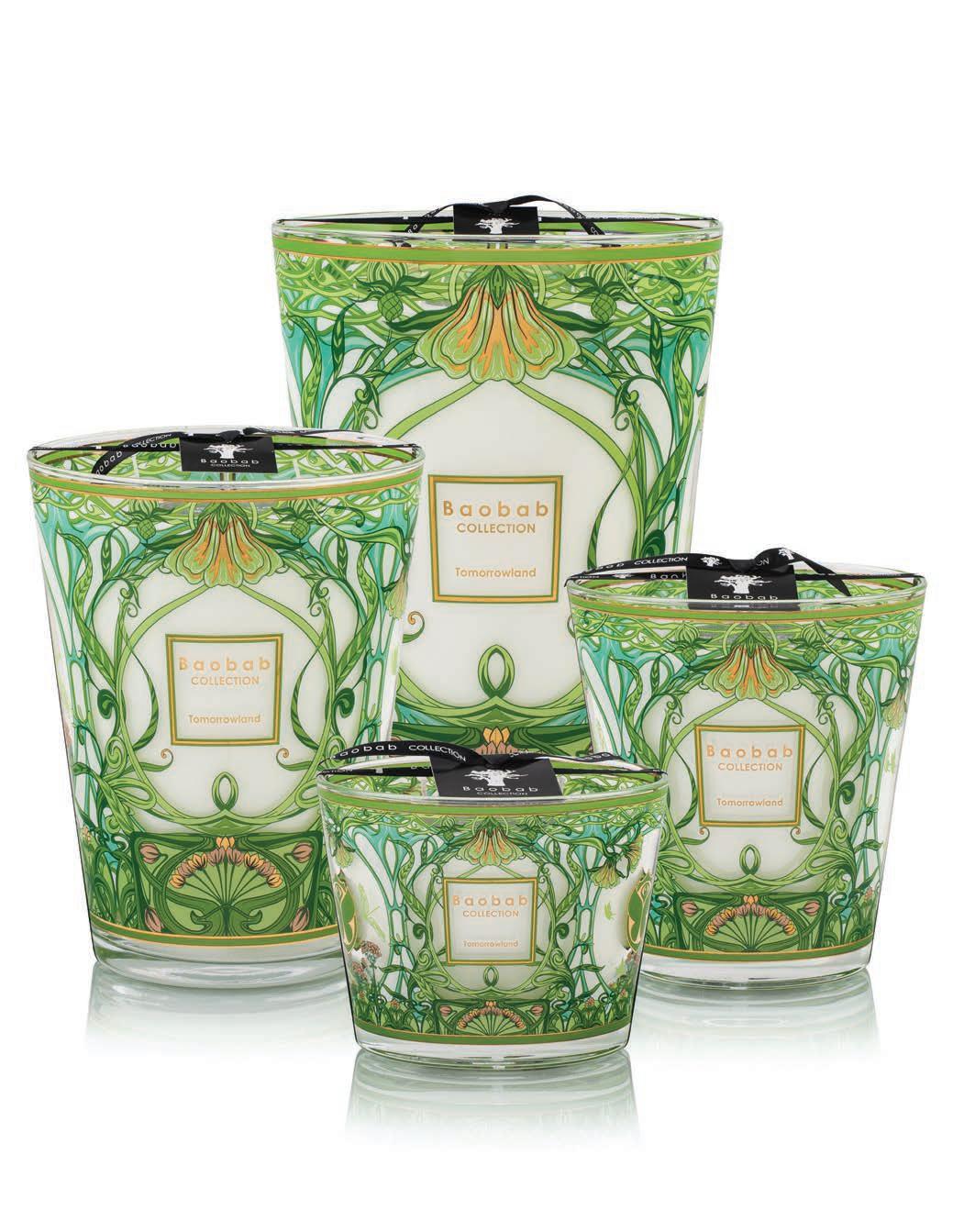

It took this St. Louis family five years to find just the right property for their second home. But once they did, they immediately knew it was right for them.
“We were looking for a piece of land where our family could go for retreats and to be away together in the Augusta-Defiance area,” says the homeowner. “When we found our spot, we knew it was perfect at first sight: 170 acres of rolling hills, high vistas, and farm grounds that were once home to the Osage tribe as well as the Boone family. In fact, after we closed on the property, we learned that Nathan Boone, the youngest son of famed frontiersman Daniel Boone, was a former owner.”
The fact that the property lacked a house only added to its appeal, because it gave the homeowners a clean palette from which to work. “We wanted to capture something that would have a modern feel, but also look like it could have been structurally built back in the day,” says the homeowner. They hired an architect, Jeffrey Hancox, who had worked on similar projects in Colorado. “We designed it to look like the floors were torn out and redone, with some of the structural beams exposed.
There’s timber truss construction, and it’s all shiplap – there’s not a piece of drywall in the house – in keeping with the time period.”
Another couple referred the homeowners to Amy Studebaker Design to help bring their dream of a modern farmhouse to life. “When we first approached this project, the main vision for the space was to create a home that would be functional for entertaining family and friends,” says designer Amy Studebaker. “We loved working with the architect to create a vacation home that had ceilings with beautiful architectural interest, giving the space an industrial and modern feel.”
Amy starts every new project by meeting with the homeowners to get a sense of their vision. “For this particular home, we knew that we wanted to lean into a very modern, industrial style, which is unlike most of the homes that we design,” says Amy. “After meeting with our clients, I am able to take the aesthetic that the clients want, and from there, I draw inspiration from various sources, whether that’s magazines or thinking of previous places I’ve visited. It’s all about trying to pull design elements together that speak to the feeling in the home we are trying to create.”


 Industrial elements – like the exposed ductwork and steel banister – inject the farmhouse with a modern aesthetic.
Industrial elements – like the exposed ductwork and steel banister – inject the farmhouse with a modern aesthetic.


 Elegant brass fixtures catch the light in the dark blue kitchen, designed with both entertaining and family life in mind.
Elegant brass fixtures catch the light in the dark blue kitchen, designed with both entertaining and family life in mind.
Here, the trick was to create a space that felt rustic enough to be a hunting lodge yet refined enough to entertain – all while accommodating the demands of a family of six enjoying country life. From the rugs to the flooring, materials were carefully selected to fit the aesthetic while also being able to sustain hard wear. Throughout the home, white shiplap walls, black trim, and exposed beams create a clean look that straddles the divide between farmhouse and industrial. Shades of dark blue – from the kitchen cabinets to the living room furnishings – echo the sky outside while softening the space. Medium browns and leather furnishings round out the natural palette, providing texture and warmth.

“Amy and her team really helped us with the material selection. We were leaning towards a cypress material for the exterior; they helped us select a white-and-black color scheme, which has really served us well,” says the homeowner, who also
notes that “there are a lot of really cool touches [throughout the home]. One room, which we called the hunt room, was built using reclaimed wood and tin from an old barn.”
Another highlight includes a large painting of Daniel and Nathan Boone meeting with members of the Osage tribe, commissioned by Missouri painter and historian Bryan Haynes. In deference to the property’s history, it hangs in the home’s main room in a frame made from an old walnut tree that had to be cut down on the property.
“The homeowners had great ideas and descriptions of what they were wanting right from the beginning,” says Amy. “This helped to guide us in the right direction in terms of choosing design elements for the home. They were on-site, checking in periodically, so they were able to really see everything come together and get excited about the finished home.”
The view from the front porch captures the rolling landscape that originally drew the homeowners to this spot.

 The bunk room, with its hidden loft, is one of Amy’s favorite parts of the project.
Primary bedroom is bright and fresh.
The bunk room, with its hidden loft, is one of Amy’s favorite parts of the project.
Primary bedroom is bright and fresh.
Of course, part of any good design involves providing homeowners with ideas they hadn’t thought of – and which sometimes gently push them out of their comfort zone. For example, Amy and her team came up with the idea of covering a wall with stone. “It starts from the lower level and goes all the way to the roof,” says Amy. “Even though this was a new build, I loved the idea of this stone wall feeling like it was original to the home and that there was some history there.”

“I wasn’t so sure – I thought it might look heavy,” says the homeowner. “But now, I don’t think the house would have been right without it.” Amy and her team also encouraged the homeowners to put a fireplace across from the entry and were pivotal in sourcing some of the defining pieces in the home. “We love the kitchen table, for example, which is something they brought forward that we could have never found on our own. Now, the great room with that fireplace and table is our center of gravity when we’re out here.”
Amy, meanwhile, says that one of her favorite spaces in the home is the bunk room. “There is a hidden loft in there that I just know is fun for any young guest staying at the Barn Home!” The two built-in bunks are cozy yet spacious, with sconces that look like vintage lanterns and a top railing that resembles an x-shaped farmhouse fence. Looking back on the project, Amy notes that “what stands out the most for me is designing a home that is completely different from our other projects. I love being able to design for any kind of style, so doing something more in a modern barn style is a breath of fresh air!”
As for the family, they enjoy that their vacation home is refined enough to entertain while still being a country home at its heart. “It’s comfortable; we can come in from being outside and take our boots off right where we are,” says the homeowner. “What we love the most about it is the combination of being out there, the history of the place, and that we were able to build that is unique and unencumbered by traditional styles of a home.” sl
FOR A FAMILY RETREAT OR PRIVATE CORPORATE NEEDS, OVERLOOK FARM IS A SURPRISING AND INSPIRING OASIS OFFERING ITS FIVE INNS AVAILABLE FOR LEASE FOR THE FIRST TIME IN ITS STORIED HISTORY.




RELAX. PLAY. LIVE.
Just 75 minutes north of St. Louis!
overlookfarmmo.com
CEDARCREST MANOR Nestled among a cluster of towering cedars and tucked away just up the hill from the city of Clarksville. Built in 1842 by Captain Benjamin Clifford, a prominent riverboat captain, Cedarcrest began its life as a plantation home and quickly became the archetype for a number of houses built in the Mississippi River Valley. Romanesque pool which creates a quiet, and restful place to relax and recharge. Rich with amenities, this enchanting Missouri inn is adorned with antiques and features a fireplace in every room.
RACKHEATH HOUSE Perched atop the hills of the Mississippi River Valley, and situated just a short walk from the Overlook—one of the highest spots along the river. Built in 1860 and restored in 2006 by Nathalie Pettus, this Greek revival-style manor features sprawling grounds, a spacious veranda, and a romantic, flourishing garden filled with gorgeous walking paths. Its accessible, state-of-the art kitchen and elegant dining room provide guests with the ideal place to uncork a bottle of wine or sip a cup of coffee.
GREGG WILLIAMSON

(cell) 314-359-9210 (office) 314-677-6254


GreggWilliamson.com
BRIDAL COTTAGE An intimate space for couples to get away. Perched above the meadow, surrounded by rolling hills, it provides beautiful views of the sunrise and sunsets. A guest will find a full kitchen and beautifully decorated bedroom creating a weekend you’ll never forget!
AVALON HOUSE By far one of the most breath-taking views on the property overlooking the Mississippi River. This home is perfect for retreats of any occasion. Avalon House is fully furnished with four bedrooms, four bathrooms, a kitchen, and a wrap-around deck.

In a world where busyness is too often touted and revered, the Andaz Mayakoba quietly and adeptly brings the art of purposedriven tranquility back into focus.
Just beyond Playa del Carmen, the Riviera Mayan coastline humbly beckons visitors to rest, recharge and recreate at its newest luxury resort, the Andaz Mayakoban.
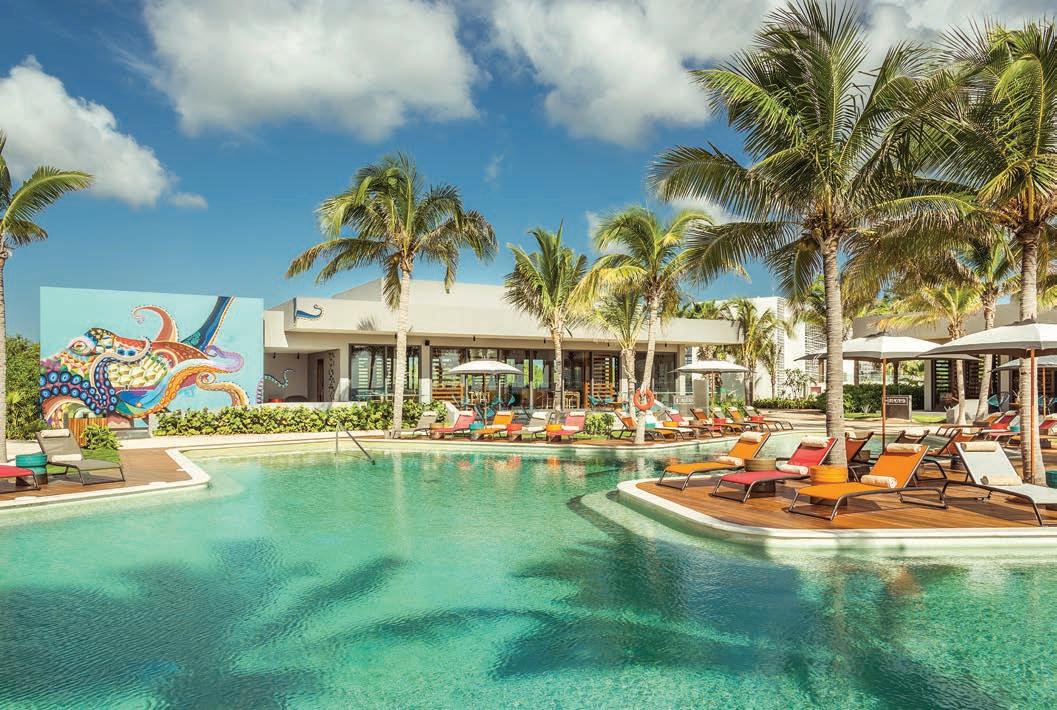
Poised as one of four resorts pristinely tucked into a tropical rainforest, under the Mayakoban umbrella of high-end, luxury resorts, the Andaz has taken great care to respectfully reside amongst the twisted mangroves, winding canals, impossibly clear lakes and cenotes, and the ever-turquoise waters of the Caribbean Sea.
Guests can indulge in an array of activities as colorful as the curated native bird murals stitching the buildings together against a verdant backdrop. Or, one can consider slipping into the world of stillness: daydreaming, bird watching, napping, reading, or thoughtful conversation.
While the default mode, woven throughout the Andaz, is "oneness with nature," you can build your day accordingly. The menu of options is rich and satisfying: a wellness spa, yoga by the beach, water sports (hydro biking, kayaking, wind sailing, snorkeling from a boat or with sea bobs), scuba diving, jet skis, playing golf on Latin America's first PGA-toured golf course, the sea of gastronomic delights and a slew of cultural adventures. All events are at your fingertips and waiting to be tailored to your liking by the effusively warm and abundantly available staff.
Wanting to gain my bearings, I scheduled the lagoon boat trip, which canvased the area as our guide spotted unique wildlife (crocodiles, quirky birds, camouflaged iguanas). Home to 330plus species that roam freely (and I do mean freely) through the lush 620-acre property, you quickly realize the expansive measures taken to preserve and cultivate these tropical environments. As a result, the Andaz proudly voices a call to action within the world of tourism, garnering it a handful of awards and nature certifications. Cruising gave us a grand overview of wildlife while also whetting our appetite for the varied dining options.
After my initial meal, dining became an active pastime for me. Choosing from one of five on-site restaurants, thankfully, became the most challenging part of my day. Each restaurant sources fresh local ingredients and combines them with authentic cooking techniques to create dishes graciously served by a kindhearted and impeccable waitstaff.
Centrally located and residing next to the poolside pavilion, Casa Milagros produces food as beautiful as its setting. The interior decor pairs stone, locally crafted tile, and local tzalam wood. It offers authentic Mexican, Latin, and unique international dishes. We circled back on a few different nights as the melt-in-yourmouth tuna tataki and pork ramen tempted us to return. But food is only half of the draw as we quickly developed a fondness for the doting staff; Louis made an impression as strong as sticky rice pudding with coconut milk.
by Ashley Gude / Photography courtesy of Andaz Mayakoba Resort Riviera Maya
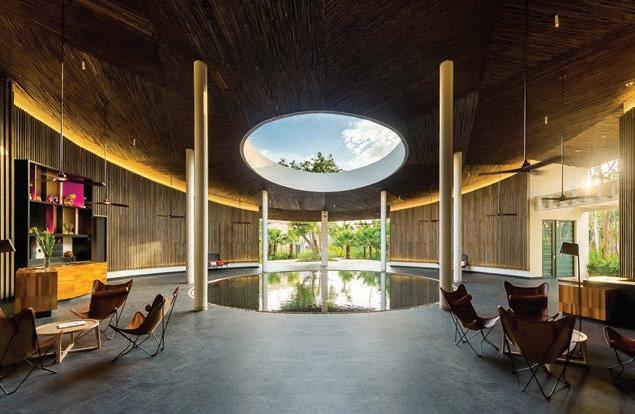

 The Sanctuary
Photo by Tadeu Brunelli
Presidential suite terrace view.
Photo by Tadeu Brunelli
Sanctuary interior
Photo by Tadeu Brunelli
The Sanctuary
Photo by Tadeu Brunelli
Presidential suite terrace view.
Photo by Tadeu Brunelli
Sanctuary interior
Photo by Tadeu Brunelli
We frequented Tinto del Pulpo because of its accessible location (poolside) and lovely staff. The consistency of the quality of the Mexican fare and locally-crafted artisan beers made this a mainstay. The fresh ceviches and homemade churros with tapioca ice cream also may have had something to do with me being a repeat offender.
The Vegan Bar was a stone's throw away. They are always happy to whip up a fresh smoothie or healthy drink at a moment's notice.
They also offer various unique vegan options, including my new favorite, a rice ball salad (fried rice with polenta, mashed red pepper with truffle, green peas, avocado, and spinach salad).
If you're looking for the elusive perfect photo op, head to Sotavento. An Insta-worthy setting awaits as tables and softly cushioned chairs lap the edges of the Caribbean Sea. Set under the romance of string lights, with feet buried in the sand, you can select from fresh seafood, gorgeous salads, and prized desserts (almost too pretty to eat … almost).
Rounding out the dining options, Casa Amate serves up memorable Latin American cuisine interestingly set amidst what
is best described as an "eclectic traveler's home." You can sample creative local cuisine from the comfort of different eye-pleasing rooms of the "house" (dining room, library, bar).
While the sea is the primary source driving the culinary menus, it also provides a rich marine landscape when scuba diving. On two diverse occasions, I explored the peaceful underwater world of the Mayan barrier reef. Only a short boat ride from the shore immersed me in a grand collection of wildlife. The highlight was spotting a family of eagle rays at a depth of 48 feet right at the conclusion of one of our dives.
Luxury reigns supreme across the landscape of the Mayakoba. Whether in the pursuit of experiencing artful cuisines or endorphin-raising adventures, the biggest luxury is choice. The ability to choose your day is not lost on guests, whether you prefer a quiet, contemplative, restorative day or a day brimming with activities fueled by the exotic lush backdrop of the beckoning blues of the Caribbean Sea. You will certainly want more, no matter what you choose, just like the coconut tapioca. sl
 Duffy boat
Duffy boat
Unable to resist the allure of a good origin story, I admit to being very intrigued by the competing name origins of Lovango island, between St. Thomas and St. John in the USVI. While I've yet to uncover a sea shanty attesting to the legend, the predominate theory is an interesting yarn nonetheless. The island, inhabited since the mid-1700s, is said to have been home to the only brothel in the area, and the pirates' shortened the name of their "Love and Go Island" to Lovango. However, documents from the St. John Historical Society contend that there's a less spicy reason behind the name: an affiliation with a 17th-century trading post in the Congo, sometimes written Lu'ongo or Loango.
Nantucket-based hoteliers Mark and Gwenn Snider, owners of Little Gem Resorts, purchased 42 acres of Lovango island in 2019 and immediately set about building the first new resort in the USVI in three decades. Designed as an off-the-grid-getaway a stone's throw from the hustle and bustle of St. Thomas, Lovango Resort & Beach Club offers laid-back luxury that doesn't sacrifice creature comforts.
Easily accessible via a short ferry ride from the American Yacht Harbor in Red Hook on St.Thomas, the tranquil 15-minute journey across Pillsbury Sound immediately puts the mind in a more relaxed vacation state of mind.
 Written by Claire Williams / Photography by Nicol Canegata / Photography with interior design/creative direction from Michael Thomas & Co.
Written by Claire Williams / Photography by Nicol Canegata / Photography with interior design/creative direction from Michael Thomas & Co.



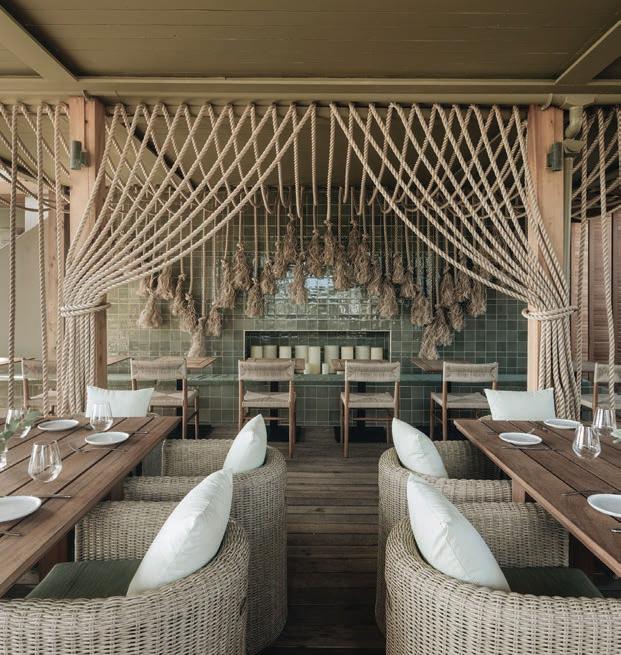
As the resort master plans call for it to be fully built out over several years, during our visit, a reception and breakfast area for overnight guests was under construction atop a hill overlooking the beach club. There are 17 glamping tents and treehouses on the island's "backside," staggered on the steep hillside amidst a dense tropical landscape. The accommodations face an uninhabited island designated as a bird sanctuary, lending the feeling you are a million miles from civilization. In addition to providing a unique guest experience, the tents serve a practical purpose as they can be disassembled during hurricane season when the resort is closed.
We split our stay between a glamping tent and a treehouse. While both were stylishly outfitted and boasted a large cantilevered deck, the additional elbow room in the treehouse and an outdoor shower made it my favorite. MALIN & GOETZ toiletries and Matouk towels are among the elevated in-room amenities. Screens in the louvered doors and windows allow the trade winds in and keep the bugs out. The drapery and netting
of the canopy bed conceal a clever air conditioning system that regulates the temperature within the sleeping area and kept a hot sleeper like me comfortably cool.
While there isn't a gym on the property yet, making the 500foot vertical trek from the beach club to our room several times a day was all the workout we needed (golf cart transport is also available on call). There are also several hiking trails, including one that leads down to rocky and remote Crescent Beach (guests are given snorkeling equipment at check-in). A yoga mat and blocks are provided in each room.
Owning seasonal resorts on different schedules is a boon for the Sniders, who allow the staff at their properties to cycle between Nantucket and the USVI. Having seasoned staff from day one allows the newly opened resort to operate on a level similar to one that's been up and running for years.


The Sniders are hands-on owners, and it's not unusual to find the couple going from table to table at dinner, chatting up
 Poolside cabana at the Beach Club
Covered terrace of a glamping tent.
Poolside cabana at the Beach Club
Covered terrace of a glamping tent.
guests and soliciting feedback. When I asked him why he and his wife wanted to take on such an ambitious project on a tropical island, Marc responded, "I like being in the business of making people happy."

Our first-night feast was a global culinary whirlwind, with Caribbean lobster schnitzel, sea urchin gnocchi, green papaya and tea leaf salad, and Thai-inspired Caribbean seafood stew. Ferry service is available for non-overnight guests who want to come to Lovango's waterfront restaurant for lunch or dinner to enjoy chef Stephen Belie's award-winning cuisine.
The buzzy Beach Club is the heart of the resort. Offering day passes, a rotating lineup of events including a quite competitive water balloon toss, 'sand pit' games, an infinity pool, private cabanas, and excellent food and beverage service encompassing both healthy and "vacation calories don't count fare," it's the ideal anecdote for Type A folks needing a respite from their in-room relaxation. In short order, the Sand & Stars
party at the Beach Club on Friday nights has quickly become a must-attend event.
For a special souvenir, pick up a bottle of Little Gem Spirits’ Sweet Tamarind Rum, Caribbean Spice Whiskey, or Sorrel Lime Vodka from the cute boutiques lining the sandy boulevard near the beach club. The Sniders worked with St. Croix chef Todd Manley— credited with creating Mutiny Island Vodka distilled from the Breadfruit tree—to create spirits infused with flavors of the island. While they make an exciting addition to craft cocktails, I found they are perfect summer sips on their own.
Overnight guests are offered off-island excursions, including a water taxi across Caneel Bay to Honeymoon Beach on St. John's for two hours of snorkeling and relaxing. Regular ferry service between St. John and St. Thomas and private day charters are also available. Treasuring the tranquility afforded on the island, we honestly didn't feel a strong pull to "love and go" from Lovango during our threenight stay, as the diversity of offerings kept us amply occupied. sl
In the City that Never Sleeps, the ebb and flow of hotel openings and closings happen so regularly that they often register as a ripple in the Hudson to those outside the Big Apple bubble. However, when Aman New York opened its doors in August of last year after a series of delays, it made a full cannonball-style splash.

With its takeover of the historic Crown Building, Aman New York delivers the peace promised by Aman's Sanskrit-derived name and the palpable tranquility of its Asian roots to a covetable corner of 57th and 5th Avenue in the heart of Manhattan. The stepped skyscraper with a gilded chateau-esque tower, completed in 1921, has long held the distinction of garnering some of the highest rents in the city. The mixed-used building has a fascinating and diverse tenant and ownership roster including being the first site of the MOMA from 1929-1932 in a rented 12th-floor six-room suite.
Long-time Aman collaborator Jean-Michel Gathy, a Belgian architect whose three-decade dossier in all-exclusive luxury resort design includes Aman's exquisite Venice property on the Grand Canal, spearheaded the building's renovation.
When I tell you this place is magnificent, I mean it. There's a beguiling generosity of space and a harmony of design that instantly envelopes all the senses. Both overt and subtle design elements hearken to the brand's Asian roots. Intended to be a vertical resort, seating in public areas is oriented to keep the gaze inward on the beauty and serenity of surroundings rather than the city's frenetic
energy. We found it to be such a haven that throughout our two-night stay, we only (and reluctantly) left the confines of the haute hotel twice: once to meet an old friend for lunch and the other for a long walk in nearby Central Park, as a petite penance for all of our glorious and gluttonous indulging and imbibing at the property's signature restaurants—Arva and Nama—and its subterranean jazz club.
If you are someone desiring to feel like someone, this is the place for you. A team of attendants awaits at the front door, with more security at the elevator that takes guests up to the reception area on the 14th floor. As soon as the door opens, it's difficult not to be gobsmacked by Aman New York's bold minimalist view of a luxury urban hotel.
Calm, cool, and curated, the lighting design beckons you to want to see what's around the next corner. Fire is a recurring element, and a fireplace in the reception area helped to take the chill off a cold February morning while we completed the check-in process. The reception level is the heart of the hotel and populated with beautiful people from day to night. At present, only residents and registered guests have access to these elevated areas. Still, I can't imagine the powers that be at Aman will be able to fend off the requests for extended access, particularly in the summer months, when its exquisite 7k square-foot Garden Terrace, replete with extensive landscaping, fire-centered water features, retractable roof, and chic seating areas are fully availed.
The Bar Lounge. Artist Peter Gentenaar created the paper and bamboo sculpture that “floats” overhead.

 Interior of Nama
The Garden Terrace
Interior of Nama
The Garden Terrace



 Corner suite living room
Each suite boasts a large-scale art mural on rice paper inspired by the 15th-century masterpiece Pine Trees (Shōrin-zu byōbu) by Hasegawa Tōhaku.
Junior suite bathroom.
Corner suite living room
Each suite boasts a large-scale art mural on rice paper inspired by the 15th-century masterpiece Pine Trees (Shōrin-zu byōbu) by Hasegawa Tōhaku.
Junior suite bathroom.
The 83 suites are located on the floors beneath the lobby, as well as the spa, which encompasses 25k square feet over three entire floors (more on that later). The attention to detail and lighting extends to the guest rooms and suites, which are colossal by NYC standards.
As soon as the door to our room opened, my eye was drawn to the warm glow emanating from a fireplace—a rarity in Manhattan hotel rooms—at the far end of the room between a pair of windows overlooking Bergdorf and the crowds assembled to ogle the animatronic Yayoi Kusama painting her signature polka dots in the window at Louis Vuitton's midtown store.
To my left, a wall of handsome cabinetry concealed a generous amount of closet space, a coffee station with beautiful handmade ebony stoneware cups and saucers, and a minibar. On the right, a series of shoji-like screens, softly illuminated from within and mounted on swivel hinges, allowed for a "choose your own entry" into the spa-like bathroom with a low soaking tub and TOTO smart toilet. A clever console inside the door allows bags to be stored out of sight to maintain the feeling of feng shui.
Complementing the aesthetic while creating a dramatic focal point encompassing nearly the entire wall opposite the bed was a large-scale art mural on rice paper inspired by the 15th-century masterpiece Pine Trees (Shōrin-zu byōbu) by Hasegawa Tōhaku. After the giddy chatter of our reaction to the room subsided, we were met with something that's often a rarity in big city hotels—

complete silence. And, when the inevitable siren did find its way into our cocoon, it was more of a whisper than a wail.
Having visited five Aman properties, I can now count myself among the "Aman Junkies" club members. As such, the food and beverage program at Aman New York is heads and shoulders above what I've experienced at other Aman properties where the setting and architecture were the scene stealers.
Arva is located adjacent to the double-height buzzy Bar Lounge, where sinuous saffron-colored paper and bamboo sculptures that reminded me of a koi fish in motion (but were created by Peter Gentenaar to resemble Oriental lanterns) "float" between four stone columns. Open for breakfast, lunch, and dinner under the direction of Italian Chef de Cuisine Dario Ossola (whose previous gig was at Aman's Venice property), the Aman brand's signature Italian restaurant Arva pays homage to Italy's rustic, cucina del raccolto tradition with seasonally rotating, elevated comfort food served in refined spaces around a central open kitchen. Arva strives to source seventy-five percent of its ingredients locally via partnerships with Grow NYC and Our Harvest, representing over 750 farmers and managing at least 100 farmer's markets in and around New York City. Lucky for us, it was truffle season during our stay, and we went decidedly nonlocal, opting to have the fragrant fungi crown nearly every course of our leisurely lunch.

 The heated pool is the centerpiece of the three-floor Spa at Aman New York.
The heated pool is the centerpiece of the three-floor Spa at Aman New York.
Dramatic cubes of chiseled rock mark the entrance to Nama, Aman's celebration of Japan's washoku dining tradition. Just inside the entry, a Japanese Hinoki wood counter is the site of twicenightly seatings for a 15-to-18-piece omakase-style fine dining experience. The staggered Complementing Frank Lloyd Wrightinspired ceiling and lighting pendants is a feature work created by local artist Melissa Hart.
Chef de Cuisine Takuma Yonemaru's sublime cuisine shines with every course, and we enjoyed sitting at the "kitchen counter," where we ate with our eyes before feasting on everything from sashimi to fork-tender Wagyu sirloin sprinkled with Moshio mineral salt and presented on handcrafted tableware emblematic of the Japanese notion of wabi-sabi. My better half, who has traveled extensively throughout Asia for work, remarked that it was the best Japanese food he'd had outside Japan.
Attesting to the property's ability to engage and satiate from morning till night is a basement-level speakeasy-style Jazz Club, one of the few venues "slightly" open to the public by reservation and boasting state-of-the-art acoustic technology. The intimate area is populated by crescent-shaped banquettes along the perimeter and tables near the draped stage, where a vintage Steinway sits in residence. Six-time Grammy nominee Brian Newman is the venue's creative director, booking a well-rounded group of acts encompassing contemporary jazz to the Great American Songbook. Live acts preceed late-night DJ sets (which, despite our best

intentions were unable to stay awake for). We fully expected the food to be an afterthought, but I am still craving just one more bite of their truffle grilled cheese some four months later.
If you are serious about self-care, the sanctuary offered by the vast Aman Spa is for you. At its heart is a 20-meter pool ringed by fabulous cone-style fireplaces and sleek seating areas. En route to your treatment, be sure to check out the boutique, featuring a selection of Aman-branded Goyard-esque leather goods, and Aman's eponymous apparel, skincare products, and fragrances; a whiff of the latter is enough to transport me back into a vacation state of mind.
As someone who checks out a hotel's gym on their website prior to booking a stay, the generously sized fitness facility was a dream for a workoutaholic like me with both tried-and-true equipment and high-tech offerings, including an anti-gravity treadmill.
Unique to New York City, Aman's indulgent and private Spa Houses, used for full or half-day retreats, offer either a Hamman or a Banya (a wood-clad sauna), in addition to a double treatment room, a living area with fireplace, and a large canopied outdoor terrace with hot and cold plunge pools for an utterly personalized spa experience. My chosen spa treatment, the two-hour Aman New York Signature Journey, focused on the healing, stabilizing, and balancing benefits of the fluorite crystal and, with apologies to Billy Joel, put me in a new New York state of mind that I could easily get used to. sl
For more information about Aman New York, visit aman.com/hotels/aman-new-york.









Graziela Ascension ring ($8,750; grazielagems.com). Suzanne Kalan diamond heart necklace (suzannekalan.com). David Yurman Streamline Tag in platinum with baguette diamonds ($18,000). Available through Diamond Cellar in Columbus, Moyer Fine Jewelers and Reis-Nichols Jewelers in Indianapolis, Davis Jewelers in Louisville, and davidyurman.com. Ananya Fine Jewelry Chakra ring ($5,400; ananya.com). Fred Leighton 1950s platinum diamond waterfall pendant earrings by Boucheron ($310,000; fredleighton.com). Effy Nature black and white diamond butterfly ring ($6,440; effyjewelry.com). Shahla Karimi long baguette V ring ($7,400; shahlakarimi.com).


Xpandable Gold Accent bracelet from Picchiotti ($66,300). Available from Moyer Fine Jewelers in Indianapolis, Elleard Heffern Fine Jewelers in St. Louis and at picchiotti.it/en. LXI OOAK sunset V-shape scatter ring from Ellis Mhairi Cameron ($3,010; ellismhairicameron.com). Nadine Aysoy Le Cercle ring ($14,060; nadineaysoy.com). Sig Ward Manifest charm ($4,050; sigwardjewelry.com). Yessayan baguette diamond statement earrings ($28,000; yessayan.us). Halleh pearl and baguette diamond earrings (halleh.com). Walters Faith Ottoline rose gold baguette hoop earrings ($9,950; watersfaith.com). Hoop earrings from Albarré Jewelry in St. Louis (price upon request; albarre.com). Harakh colorless diamond men’s ring ($6,800; harakh.com).









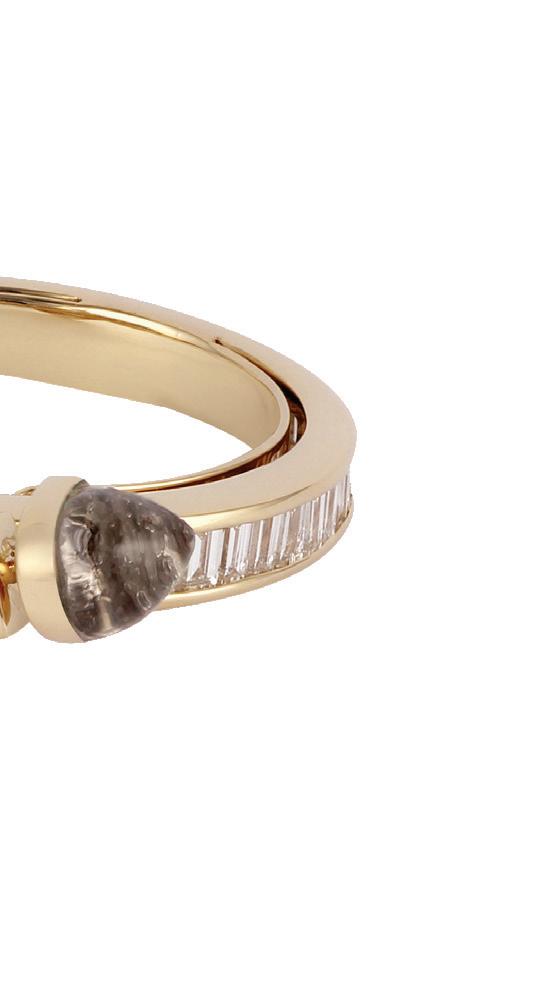




















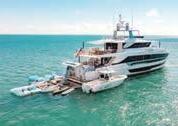









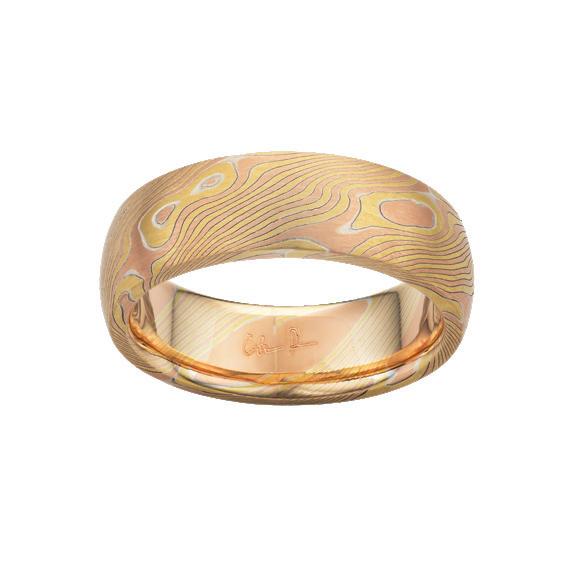





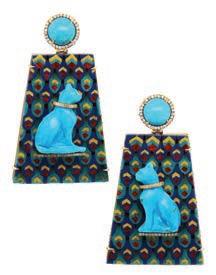










Marie Lichtenberg Love You locket ($3,430; marielichtenberg.com). Yvonne Léon bracelet ($12,500; yvonneleon.com). John Hardy Manah station bracelet ($495). Available through Reis-Nichols Jewelers in Indianapolis, Davis Jewelers in Louisville and at johnhardy.com. Deborah Pagani heart hair pin ($110; deborahpagani.com). Tabbah Talisman earrings (tabbah.com).

Available in St. Louis through Elleard Heffern Fine
($4,700). Available through Reis-Nichols Jewelers in Indianapolis and
















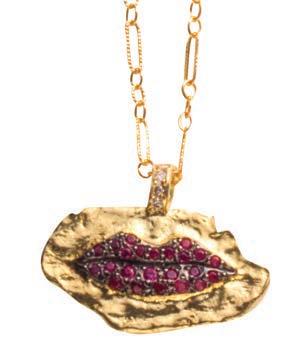







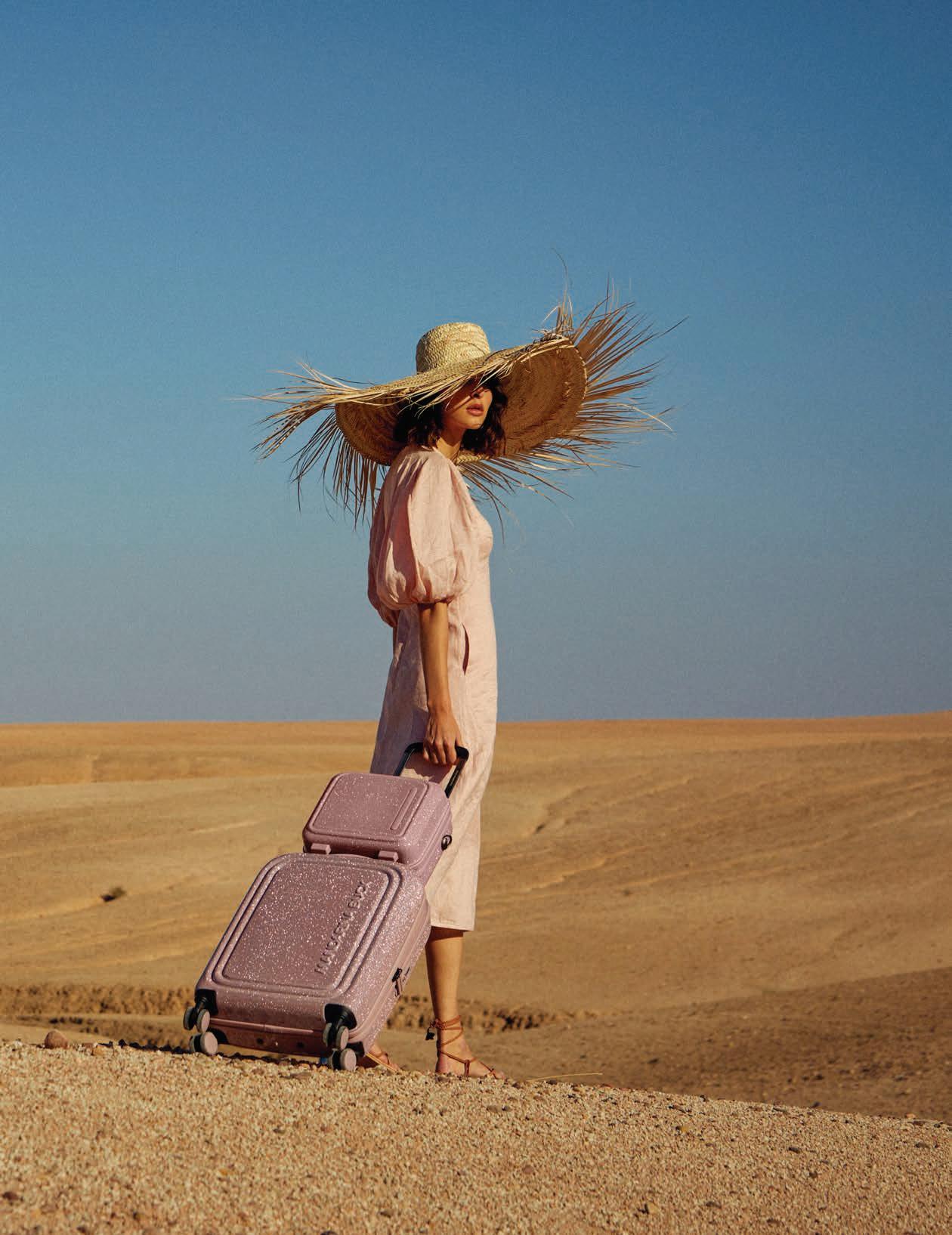




To truly know French people, one must completely grasp their food and wine culture and the rules they abide by. The need to have a baguette accompanying every meal to soak up that leftover jus on your plate; the direct eye contact made with every santé as glasses raise in a toast; and the ritual of a coffee and cigarette on an outdoor terrace after a long day.
But then the question comes to mind: when is it the time to break those rules and go against tradition to create something truly exceptional? DIVINEO does just that in the wine world by breaking the traditional codes of French wine to give a new life and reputation to Vins de France.

In 2021, after discovering a preserved valley in the heart of the Languedoc region, in the southwest of France, a group of friends from varying backgrounds, including an ex-CEO of OranginaSchweppes and winery owners, founded DIVINEO and embarked on a journey to take grapes from the South and mature them in Burgundy in the east of France. DIVINEO aims to show that it's possible to make great wines by freeing themselves from traditional codification and appellations while highlighting terroirs that sometimes go overlooked.
During the early 20th century, wine production in France was plagued by fraud and low-quality wine that prompted the creation of the Institut National del'Originee et de la Qualité (INAO), an organization charged with regulating place of origin, quality, and style of French agricultural products such as wine and
cheese. Under the INAO, the wine classification system, known as Appellation d'originee contrôlée (AOC) —French for controlled designation of origin—sets the standards for wine in France. The wine produced outside an AOC is referred to as Vin de France, denoting only that the wine comes from France. Such a designation is historically associated with wines of lesser quality and often sold under brand names.
In Burgundy alone, there are 84 AOCs, ranging from Grand Cru to Régionale appellations, which guarantee the authenticity of a region's wines, reflect the diversity of the terroir and that of its winemakers, and typically secure a higher price point. Most connoisseurs and lovers of wine are attached to specific appellations, and each have their preferred AOC; a Pauillac from Bordeaux or a Châteauneuf-du-Pape from the Rhône Valley are all examples of this.
An AOC guarantees quality and protection in the production of wine; it can also make wine predictable. While each cuvée varies yearly, most are attached to certain AOCs because it's familiar, and consumers have come to know what to expect in the bottle. This is where DIVINEO comes in: their winemakers work with Southern grape varieties in Burgundian cellars to create a new universe of sensations oscillating between intensity and freshness. DIVINEO's founders boldly aim to be the dawn of a new era of wine in France by not being classified as an AOC and reinventing the Vin de France category.
DIVINEO owns 19 hectares (nearly 47 acres), with nine under vine in the Robiac Valley. The valley offers a micro-climate of cool
nights, advantageous elevation, and a forest environment. DIVINEO hasn't shied away from embracing variety in their grapes. They cultivate Grenache Blanc, Grenache Gris, Vermentino, Roussanne, Picpoul, and Bourboulenc for their white wines. The main grape varieties already planted for their red wines are Grenache, Syrah, and Cinsault. Their remaining land will be planted little by little in the coming years, with Chenin, Petit Maseng, Carignan Blanc and Gris, and Aligoté all on the agenda.
Clodéric Prade manages DIVINEO's vineyards. A selfproclaimed Languedocien winegrower with a Burgundian palate, he is one of DIVINEO's co-founders and also the owner of Domained'Erianee in Saint-Mamert-du-Gard. In the time between DIVINEO's 2021 and 2023 cuvées, five other winemakers passionate about their aim to make revolutionary wine joined their team. The newest member of the DIVINEO team, Maëlys Jardin, says of their unusual method, "Our winegrowers are free to express all their knowhow and passion in their wines. The maturing in Burgundy barrels allows us to obtain wines characterized by their freshness and elegance. They are always high-quality wines, made with precision and care."


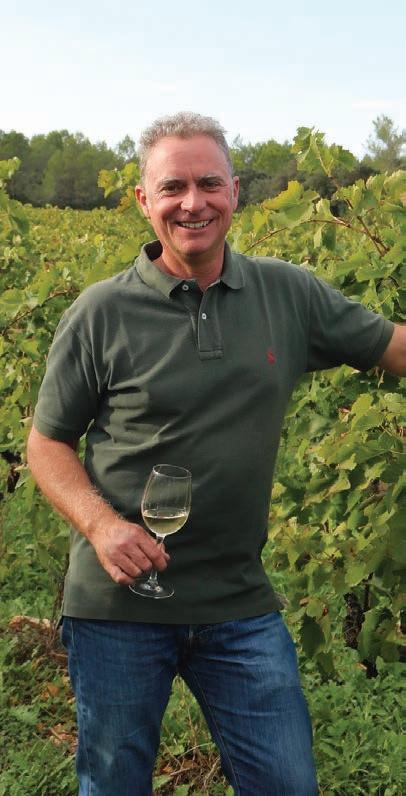
DIVINEO, like most wineries in France, grasps the importance of biodiversity in their vineyards and attempts to have as little intervention as possible, such as using indigenous yeasts and very low doses of sulfur in the winemaking process. With an emphasis placed on agroforestry and organic farming, DIVINEO wants their terroir and the talent of their winemakers to speak for themselves.
DIVINEO produced five cuvées for 2021 that genuinely express the journey from the Robiac Valley to Burgundy.
Of the five, the Grenache Vieilles Vignes—a blend of Black Grenache and Syrah—is one of their most unique and prestigious wines, made with grapes from 60+-year-old vines from vibrant terroir that imparts the grapes with a taste rarely seen in Southern territories. With notes of black fruit, spice, and a touch of smoke, this prestige range is limited to only 700 magnum bottles and will be available as of April 2023.
Creating a sense of community is also a core business goal, with DIVENEO fans invited to join their Club des Affranchis, "The Freedmen's Club". Club members are privy to exclusive convivial events in Paris, Languedoc, and Burgundy and can access members' only cuvées
While DIVINEO is just beginning its journey, the possibilities seem endless as they grow by exploring new grape varieties and continually innovating through winemaking. Julien Petitjean, one of DIVINEO's winegrowers, said he sought guidance from winegrowers on the verge of retirement to "opt for know-how over knowledge" as he forged his path to creating wine free from preconceived notions. While the time and UNESCO-honored French food and wine culture resolutely persists, DIVINEO's challenge of the status quo may lay the groundwork for new traditions to take root. sl
You can taste DIVINEO wines at Domaine
de la Roseraie in Nolay (winemaker Julien Petitjean), Domaine Petit Roy in Chorey-les-Beaune (winemaker Seiichi Saito Wang), and at Domaine Nicolas Perrault in Dezize-lès-Maranges (Perrault family winemakers). Learn more at vindivineo.com.


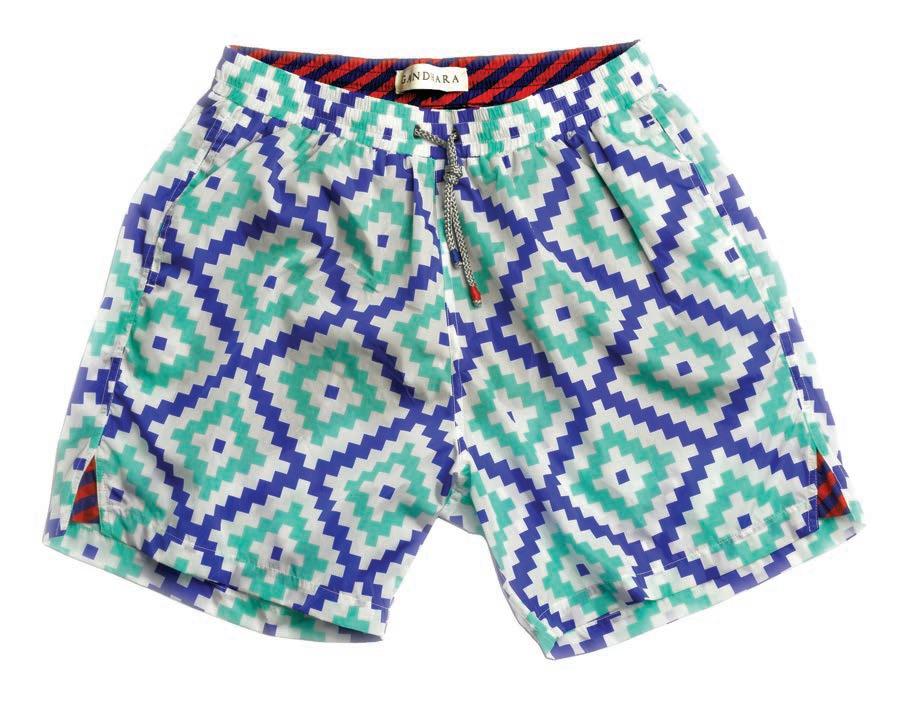


Opposite page, clockwise from top left: From Lele Sadoughi’s Contemporary Collector Spring Collection (lelesadoughi.com): Lime Zest knotted headband ($195), Marigold stud earrings ($85); Papaya & Day Dream Marigold crochet mini totes ($195/each), Natural Maya mini tote ($345), Sherbert Showers raffia ruffle handbag ($425), Pastel rainbow crochet tote ($195), and Geometric Jumble Maya mini tote ($375). Image courtesy of Lele Sadoughi. From My Beachy Side: Left: Sabrina triangle bikini ($195) and Sabrina tie-font hoodie coverup in white ($630) Right: Ginger Shell string bikini ($125) and Sabrina tie-font hoodie coverup in multi ($630; mybeachyside.com). Ceclia sunglasses from LAPIMA ($554; us.lapima.com). Alepel + RECESS pickle ball paddle ($98; alepel. com). Lele Sadoughi Jet Peggy ($145), Canary Confetti ($165), Pearl Elton ($165) and Check Mate Palm Springs ($165) sunglasses and Confetti Lily earrings ($195; lelesadouhi.com). LUISA SPAGNOLI Catapulta striped dress ($850) and Icaria bag ($370; luisaspagnoli.com). My Beachy Side Ali crochet halter top ($255) and Faye wide leg pants ($405; mybeachyside.com)

 Clockwise from top left: Jurney dress from Trina Turk ($498; trinaturk.com). Honolulu board short from Mr. Turk ($228; trinaturk.com)
Clockwise from top left: Jurney dress from Trina Turk ($498; trinaturk.com). Honolulu board short from Mr. Turk ($228; trinaturk.com)








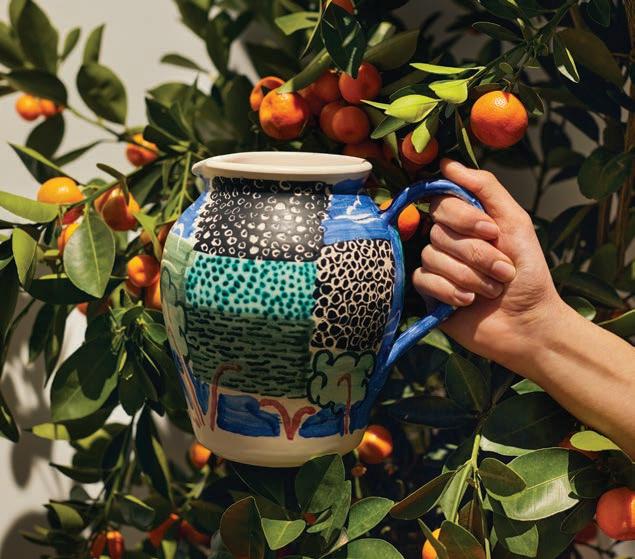




through a blend of traditional stainless steel or powder-coated framing and center panels, (danver.com/urbane). This page, clockwise from top left: ISLA modular outdoor collection from Gandia Blasco is available in seven color combinations (gandiablasco.com). The signature Flamenco® from Santa Barbara Umbrella, shown in watermelon awning-weight Regatta® solution dyed acrylic canopy and whitecap braid trim (santabarbaradesigns.com). Photo by James Chen. Mah Jong outdoor by Jean Paul Gaultier for Roche Bobois (roche-bobois.com). Available in three colors, Voyage from Trex Outdoor Kitchens features a full height door base for storage and a grill base with additional storage underneath (tree-outdoorkitchens.com). The D.150.5 solid wood chaise longue, designed by Gio Ponti for Molteni & C. ($9,780’ shop.molteni.it). Poltrona Frau's Leather Pots in the newly-developed Pelle Frau® Motif Weavers motif (from $200; poltronafrau.com).
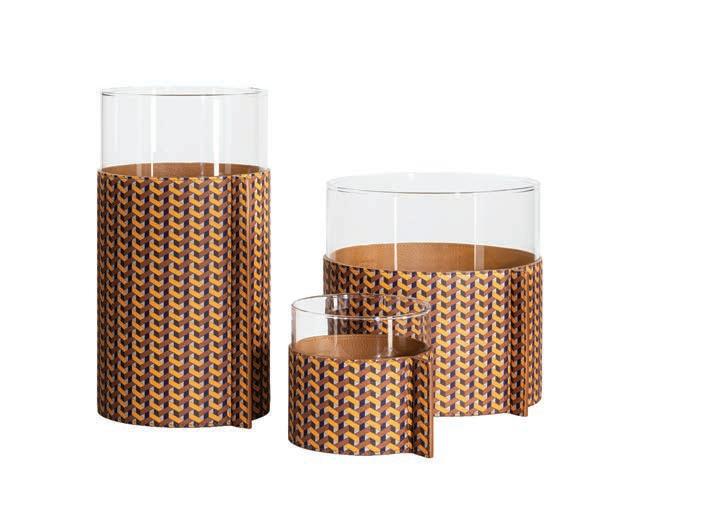





Sir Henry Royce's uncompromising command, "Strive for perfection in everything you do. Take the best that exists and make it better," is one of the most famous quotations in automotive history. It is also a maxim that rings down the ages and still inspires and informs the company that bears his name.
The price for a bespoke Rolls-Royce regularly eclipses the tens of millions. Making an appearance at the 2021 Concourso d'Eleganza at Villa d'Este on the shores of Italy's Lake Como, a Rolls-Royce Boat Tail allegedly hand-built for Beyoncé and Jay-Z is rumored to have cost an eye-popping $28 million. It's a price tag that would likely seem unfathomable to Henry Royce, who experienced hardship, poverty, and disadvantage in his early life.

Royce was born in 1863 as the youngest of five children. His family's perilous financial circumstances worsened when his father, a miller, was jailed after being declared bankrupt, the punishment according to the era's laws. Determined to make a better life for himself, by age ten, he was working in London, first as a newspaper seller and then as a telegram deliverer. Then, in 1879, with financial backing from an aunt, Royce landed an apprenticeship at the Great Northern Railway workshops in Peterborough. He quickly demonstrated his aptitude for design and a natural ability to work with tools and varied materials.
Undeterred after his Aunt could no longer subsidize his annual apprenticeship fee, Royce returned to London in 1881 to work at the fledgling Electric Lighting & Power Generating Company,
forsaking traditional engineering for the emerging field of electricity. Unregulated at the time, the lack of oversight and the need for formal qualifications to work in electricity proved to be a boon for Royce, who by age 19 was named Chief Electrician to a company supplying electric lighting to Liverpool. Unfortunately, hard times came knocking before his twentieth birthday when mismanagement forced the company into receivership and Royce into unemployment.
Relying on his savings, hard-earned knowledge, and an unrelenting work ethic, in 1884, Royce founded F H Royce & Co in Manchester, which initially produced small items such as battery-powered doorbells before moving into heavy equipment. Despite this success, a life of unrelenting personal and professional struggles took a toll on his health, and in 1901 his physician persuaded Royce to embark on a 10-week holiday to visit his wife's family in South Africa. On the return trip, he picked up a copy of The Automobile – its construction and management, and his life's trajectory took a monumental shift.
Reinvigorated from his respite, in 1904, Royce acquired his first motor car upon his return to England, a 10 H.P. Decauville. The finest car available to him, he immediately dismantled it with the stated intention to "take the best that exists and make it better." He began by building three two-cylinder 10 H.P. cars based on the Decauville layout, followed by the three-cylinder 15 H.P., four-cylinder 20 H.P., and six-cylinder 30 H.P., each of which represented significant advances in automotive design.
At the end of March, Rolls-Royce Motor Cars unveiled Black Badge Wraith Black Arrow to mark the end of production of one of the most transformative cars in the marque’s history. Limited to just 12 examples worldwide, this bespoke vehicle is the last V12 coupé Rolls-Royce will ever make, as the company embarks on its bold new electric era.
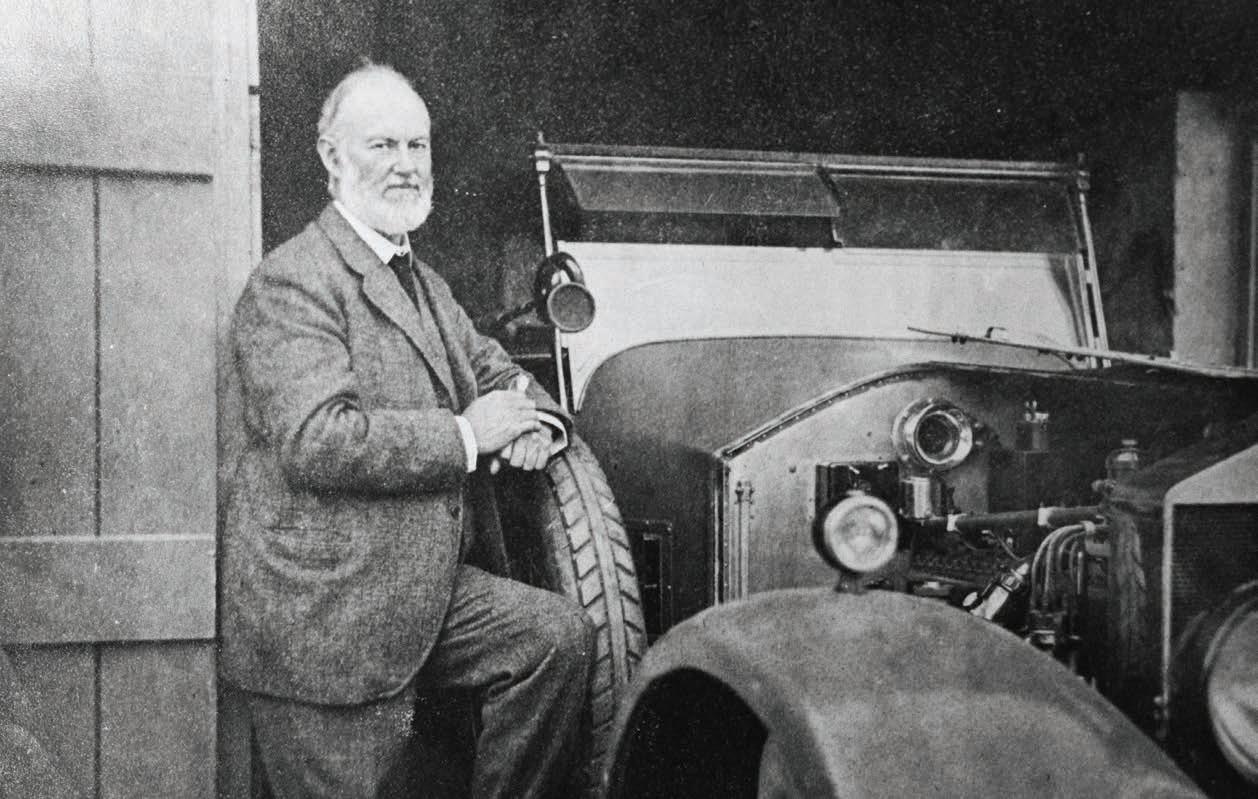
 Sir Henry Royce with an experimental Rolls-Royce car, 6ex
Sir Henry Royce with an experimental Rolls-Royce car, 6ex
In 1906, two years after the initial meeting between Henry Royce and the Hon. Charles Stewart Rolls (who, in contrast to Royce, was a younger, aristocratic, Cambridge-educated aviation pioneer and racing driver), at the Midland Hotel in Manchester, England, Rolls-Royce Managing Director Claude Johnson persuaded Royce to adopt a 'one model' policy. In response, Royce designed the 40/50 H.P. 'Silver Ghost,' demonstrating Royce's almost uncanny instinct for using the right materials for components long before scientific analysis could provide reliable data. He also discovered that fluids' properties alter with speed, so he designed the Silver Ghost's carburetor with three jets that came into play at different throttle openings, thereby eliminating 'flat spots'. At this same time, Rolls-Royce acquired a site on Nightingale Road in Derby to accommodate the burgeoning business, where Royce personally designed and oversaw building a brand-new, purpose-built factory.

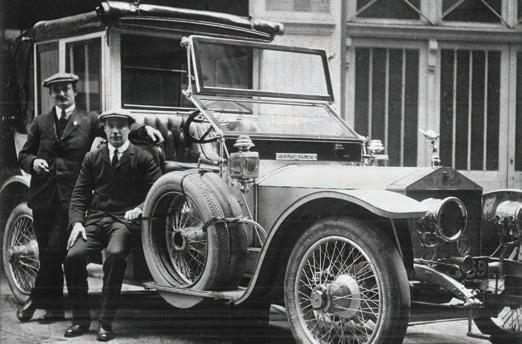
Once again, maintaining a crushing workload caused Royce to suffer a health crisis, and in 1911 his doctor prescribed a period of extended rest. Royce opted for an epic multi-continent road trip with Johnson. During a stop in the south of France on the return, Johnson bought a parcel of land in Le Canadel, near Nice, and commissioned a new house for Royce, plus a smaller villa for visiting drafters and assistants. For the rest of his life, Royce sensibly spent his winters at Le Canadel and summers in the south of England.
From 1917, Royce's English residence was Elmstead, an 18th-Century house in the village of West Wittering on the Sussex
coast, just eight miles from the present-day Home of Rolls-Royce at Goodwood. Elmstead had some adjoining land, where Royce resumed his long-standing interest in fruit farming. Inevitably, he brought his desire for perfection to this activity, too, studying every book he could find to become an expert on all aspects of husbandry, particularly soil chemistry and fertilizers. Even though farmers came from miles around to admire his crops and livestock, Royce never called himself a farmer, preferring the term 'cultivator.'
Whether he was designing car components or aircraft engines, Royce's search for perfection never waned, yet even he acknowledged that it was, in fact, unattainable. His mantra for his drawing-office staff was "rub out, alter, improve, refine." During his long and varied career, Royce filed 301 patents – an astonishing feat for a largely self-educated engineer. An instinctive, intuitive engineer, Royce firmly believed that if something looked right, it probably was right. He was awarded an OBE in 1918, and in 1930 he was made a Baronet – thus becoming Sir Henry Royce – for his services to aviation. With characteristic modesty, he wrote to all Rolls-Royce employees, thanking them for their contribution to the honor.
As his biographer Sir Max Pemberton noted, Royce was convinced to the end of his days that “only by production is a man making the best use of his time." Royce was still drawing designs within hours of his death, at Elmstead, on a custom work table fitted to his bed. The power of his ethos and legend still informs and inspires the company that bears his name 160 years after his birth. sl

 The prototype for the Rolls-Royce all-electric Spectre undergoing extreme hot weather testing in South Africa.
The House of Rolls-Royce debuted ‘Cullinan-Inspired by Fashion’ at Art Basel Miami. Comprised of two prêt-à-porter collections– the bold Re-Belle and striking Fu-Shion, these bespoke examples take inspiration from vibrant hues and textures seen in the world of high fashion, reflecting the eclectic tastes and lifestyle of the luxury clientele.
Rolls-Royce Boat Tail, 2021
The prototype for the Rolls-Royce all-electric Spectre undergoing extreme hot weather testing in South Africa.
The House of Rolls-Royce debuted ‘Cullinan-Inspired by Fashion’ at Art Basel Miami. Comprised of two prêt-à-porter collections– the bold Re-Belle and striking Fu-Shion, these bespoke examples take inspiration from vibrant hues and textures seen in the world of high fashion, reflecting the eclectic tastes and lifestyle of the luxury clientele.
Rolls-Royce Boat Tail, 2021
It’s not every day that a European-trained fashion designer from Delaware starts a business, launches a full line of women’s custom and ready-to-wear clothing, falls in love, comes to St. Louis, and decides to stay. But that is exactly where Audra Noyes Herndon’s success story starts. Herndon has produced 19 collections to date and fashion critics are abuzz by this hard working, self-starting millennial who is succeeding against all odds in an industry known for chewing up promising designers before their careers take off.

Herndon trained under top names in luxury fashion from New York City to Paris, including Alber Elbaz at LANVIN, John Galliano, and Ralph Lauren. She then launched her namesake brand, AUDRA, gained global validation, and established headquarters in St. Louis, which she is happy to now call home.
“I did not grow up thinking I would be a designer. But I have always used clothing as a form of self-expression,” she said. “As a middle school teenager, I would cut apart my grandmother’s
AUDRAnightgowns or my old jeans and create different outfits from the pieces. As I was finding my voice, that was definitely a way I could share who I was with the people around me. When I tragically lost my father in high school, I really began digging deeper into my creative self-expression. I’d been painting with watercolors and doing pottery, but it was really in high school when I started my more formal training.”
Herndon always planned to go to art school and then get her master’s in art therapy. She had experienced the therapeutic processes of healing through art following the death of her father and she thought she would pursue that as a career. It wasn’t until she attended SCAD (Savannah College of Art & Design) for college that she fell into fashion. The summer after her freshman year, she had an internship at Ralph Lauren working on their children’s wear line where she had the great fortune of some phenomenal mentoring.
Photos courtesy of Audra Noyes Herndon.“I had the opportunity to work side by side with the creative director of that line and her assistant, and really learned from the ground up how to build a collection – from inspiration to rigging the 3D mood boards that Ralph Lauren does. That opened my eyes to the world of fashion and the different areas in which I could develop. From there I didn’t stop. That experience got me hooked. I took advantage of extracurricular opportunities and received a scholarship through a competition with Cotton Incorporated that gave me funds to then pursue other internships in New York.”
She ended up climbing the ranks at Ralph Lauren via three additional internships through SCAD in the summers, eventually working on the main collection. She continued to hone her technical, design, and creative skills at SCAD. It wasn’t until her senior year however, when she was chosen for the SCAD Style Lab Mentorship Program with the chance to work with Zac Posen, that she discovered her talent for evening wear and luxury fashion.
“With Zac, I had my first experience draping bias cut gowns and doing sequin embroidery, which set me up to attract the eyes of the late André Leon Talley of Vogue magazine. André was very involved with SCAD and came to the fashion show every year. He asked to meet with me and then recommended that I go to Paris. He opened those doors for me, and I’m extremely grateful for his time and investment in me. At 20 years old, I packed my bags and went to Paris for three weeks for interviews. I had gotten interviews at four fashion houses, but I had no idea what I was getting myself into.”
Herndon continued, “This was my dream. I had turned down American job offers and pursued this because it was a tangible step towards making my dream a reality. I went there (Paris) and had a great three weeks. When I came home, I wasn’t sure what was
going to happen next. I actually had to resubmit, reapply, and redo some of my work to demonstrate further skillsets. I finally got the opportunity to join LANVIN.”
There, after several months with the LANVIN team, she was given the opportunity to draw the collection for the merchandising collection book. Through observing Alber Elbaz, Herndon recognized the importance of being able to dress women of many shapes, sizes, and personalities and further honed her technical skillsets. Then she joined Galliano and moved up the ranks there as well. According to Herndon, that was a pivotal time for the business because John Galliano was removed from his namesake brand the day she started. She called her mentor in the U.S. and asked if she should stay. The advice she got was to stay because it would be a crucial time for the brand and could result in further growth in her design career.

“(At Galliano) I was able to create a collection from start to finish – from sourcing and sketching, to vintage shopping at the markets in Paris, to shooting the collection for the look book, and helping with a runway show. This experience allowed me to figure out how I wanted to create clothing - the same process we still use at AUDRA today. Both opportunities were a very condensed couple of years that gave me immense training in a short amount of time.”
In 2014, she launched her namesake brand, AUDRA, at Paris Fashion Week with her spring/summer collection. She was just 25 at the time and made everything in France from fine Italian and French fabrics. The processes she had observed at both LANVIN and Galliano of hand sketching, draping, and using vintage garments –especially tailoring from old pants and jackets – to recreate new designs came in very handy. All of that still exists in the collection today.



 Clean cut jacket and pintuck cropped trouser in marine double wool suiting.
Asymmetric evening blouse and draped waterfall evening skirt in floral lamé.
Clean cut jacket and pintuck cropped trouser in crème fraîche double wool suiting.
Clean cut jacket and pintuck cropped trouser in marine double wool suiting.
Asymmetric evening blouse and draped waterfall evening skirt in floral lamé.
Clean cut jacket and pintuck cropped trouser in crème fraîche double wool suiting.
Shortly thereafter, she transitioned the brand to New York. “I left Paris for a combination of personal and professional reasons. New York allowed me the opportunity to still get a beautiful finish on my product at a price point that was perfect for the spot in the market I wanted to penetrate. I was able to utilize the highest-quality French and Italian fabrics while marrying that with New York manufacturing and fine finishings.”
Her initial collections were much higher end – more couture with more delicate fabrics and finishings – and a greater focus on eveningwear. She transitioned her designs in the fall of 2015 specifically because she wanted to create fashions that women could wear in their everyday lives. She really wanted to create work wear as well as cocktail dresses and easy eveningwear. While she has evolved as a designer, the core values are still consistent. There’s a high attention to craft and cut. There is an effortlessness and ease about how she designs that has been consistent since the beginning. There’s an agelessness and a timelessness in the product that has been there from day one that still resonates in the collection today.
Herndon explained that cutting her father’s shirts and jackets apart was the initial inspiration for the AUDRA brand. AUDRA’s bestsellers today are still her shirts, pants, and jackets although they are made from Crepe de Chine, cottons, and other highend fabrics. “My inspiration each season is rooted in menswear or as I say, my father’s voice - the conversation he has with me through my collection. As I have evolved through the years, that conversation between my father and me continues. My definition of femininity has changed from when I was 24 to 34, but you can still see my feminine voice influence the clothing today.”
AUDRA strives to create relationships with its customers at various and different levels. Their ready-to-wear line, for example,

has consistent core styles that can be purchased online. Customers know their fit, they know the quality, and they return looking for the update to that pant, jacket or shirt. At the other extreme, they have custom bespoke customers who want to create a gown just for a mother-of-the-bride or a specialty event. “I’m fortunate, that by moving to St. Louis in 2017, I began to build a great and really robust community around AUDRA.”
“My customers in St. Louis are not only supporters of my business, but they’re now friends, mentors, and advocates. We definitely are intentional about personally writing and calling customers to create an experience that is unique and elevated. This personalized level of service has allowed me to get great product feedback and build organic ambassadors of the brand. My customers want to tell other people who they are wearing.”
AUDRA today is an American luxury brand with European features, designed in St. Louis, developed and produced in New York by women-owned factories from the finest European fabrics, with the highest quality of craft, cut, and fit. Garments range in price from $595 to $4,000. There is a marriage of fantasy and newness in each collection that brings innovation and excitement to clients’ wardrobes.
Everything is rooted in that conversation between Herndon and her father as she designs. Every season has its own inspiration. This current season, there’s a lot of joy and love because Herndon got married while designing the collection. You’ll see inspiration from her honeymoon on safari. “But it’s still rooted in that conversation between my father and me.”
AUDRA is open from 10 a.m. to 5 p.m. weekdays and Saturday from 10 a.m. to 3 p.m. The St. Louis retail showroom is located at 9753 Clayton Road in the heart of Ladue. Stop by and let Herndon know you read her story in Sophisticated Living. sl
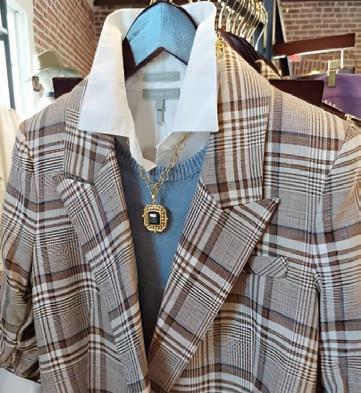
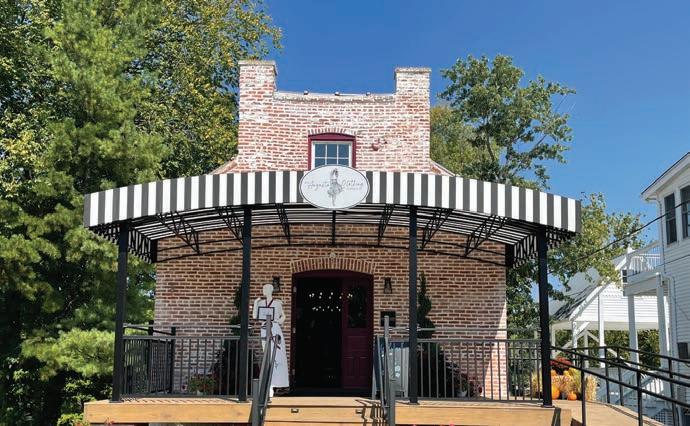
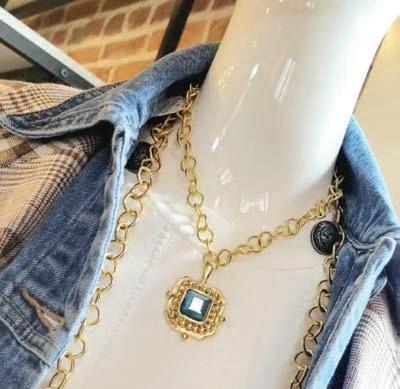
Dena Ladd’s resume is long and impressive, but the path to her current role championing research on the medicinal use of medical cannabis was not linear. While she started her career working in luxury goods with Christian Dior, she made a huge switch to politics; working on the ballot initiative ensuring that any stem cell research deemed legal on the federal level would also be legal in the state of Missouri. Being involved in this campaign and the process of educating herself on the topic spurred Ladd’s passion for medical research.
Ladd was thrilled when the late Dr. William Danforth asked her to be the executive director of The Missouri Coalition for Lifesaving Cures, now called Missouri Cures. “The goal of the organization is to protect and promote medical research in the state of Missouri,” stated Ladd. “Some people are enamored with celebrities or sports stars. For me, it is researchers,” laughed Ladd. “I am in awe of researchers who dedicate their lives to finding a cure for cancer, Parkinson’s, and other devastating diseases.”
Ladd remained in that role for over 10 years. Through it, she connected with researchers from all over the world. She was a founding board member of the Alliance for Regenerative Medicine based in Washington, D.C. She advised ARM on starting their national PAC and establishing their 501c (3).

Since leaving Missouri Cures last year, Ladd has started DSL Consulting Group, where she advises organizations on government and community relations. In 2018, when medical cannabis was on the horizon, Ladd worked with a small group to establish the Missouri Cannabis Trade Association (MOCANN) and is now the chair of the board, a role she was hesitant to take on at first. “It is a male-dominated industry. By being chair of the board, I thought I could help get more women to get involved in the industry,” said Ladd. “Now the board is one-third women.”
Ladd described the Missouri cannabis industry as “one of the most regulated industries in our state.” She continued, “I really wanted to see how medical cannabis could help patients. That is what led me to be interested in alternative medicine research, which can be very difficult to do because there is not enough funding and strict regulations.”
“Missouri owners have done a great job developing the cannabis industry, and it has had a huge economic impact on our state,” said Ladd. She notes that in 2021, one in 10 new jobs in Missouri was in the cannabis industry. Ladd noted, after recently attending a national cannabis conference, that attendees were impressed by how Missouri has developed its cannabis industry. “It is looked upon by other states as one of the best in the country, specifically for strict testing, licensing, and overall regulation.”
In November of 2022, Missouri voters approved purchase of cannabis by adults 21 years and older without a medical card. Ladd said in 2023, MOCANN is focused on policy issues, including the Safe Banking Act. They want to ensure cannabis companies are treated like other businesses with respect to banking and other business practices.
According to BDSA, a research and analytics firm in the cannabis industry, cannabis sales in Missouri in 2023 are projected to be $1 billion, the tax the state will receive will be approximately $54
Photo by Sara Wilson Photographymillion, with local governments receiving potentially $27 million. In February, the first month of recreational cannabis sales in Missouri, $103 million was sold. Per Ladd, “We are making national headlines because Missouri is going to be such a strong market.” However, she is most excited that cannabis companies can apply for a research license.
One of the areas Ladd has focused on regarding medical research and cannabis usage is its success in helping veterans with PTSD. She has met with veterans and said that “hearing their stories was heartbreaking.” She said that some cite the use of medical cannabis with assisting them with addiction and depression issues. To date, the Missouri medical cannabis tax has already generated $27 million for veterans’ health care.
Other successful uses of medical cannabis usage include treating Parkinson’s or end-of-life care. Ladd noted that the Michael J. Fox Foundation released recommendations for usage last year and believes that is a promising sign for other organizations to support the use of medical cannabis. “Doctors still want to see more
research, which is why I think it is so important to keep moving alternative medicine research forward,” Ladd commented.
Ladd’s latest venture ties her experience in fashion with her passion for research. She recently introduced a line of jewelry and accessories called Flora Jaine, featuring delicate gold and silver cannabis leaves. When asked why she decided to start this line, Ladd said, “It goes back to the research, which is largely privately funded. I was thinking about what I could do to move research forward, so part of the proceeds from Flora Jaine will go to fund research projects.” She wanted to create tasteful and subtle jewelry that combined showing support for the love of the leaf and for research.
Ladd recently launched a policy group, the Alternative Medicine Alliance, whose mission is to pass legislation encouraging research and education for alternative medicine for patients struggling with medical and mental health conditions. Unsurprisingly, her ever-growing resume will continue to expand as she leads the way in unchartered territory. sl
 To shop Flora Jaine, visit florajaine.com.
Flora Jaine Jewelry
To shop Flora Jaine, visit florajaine.com.
Flora Jaine Jewelry




You may have seen the artwork of Connor Wright around St. Louis, or on the news, or in another city where he is making headlines. This 25-year-old artist from St. Louis attended Priory and graduated from the University of Pennsylvania with a degree in Cognitive Neuroscience, with an aptitude for math, algorithms and all things visual. With a wild imagination and the ability to take an idea – a big idea – and turn it into a 3D work of art, he is being sought by brands, cities, collectors, and the art world in general...and he is fetching top dollar for his work.
His talent was noticed immediately and he received commissions for major installations from the Cardinals, The Magic House, Facebook, Maybelline, Saint Louis Bank, and now a Broadway production company to name just a few. Combining his raw genius with the ability to tell complex stories in visual terms, his career trajectory is what you would expect from a hot start-up company, not a conceptual artist.

“I grew up loving art and making it all the time,” he explained. “I recently found an assignment from first grade where I shared that I wanted to be the world’s most famous artist when I grew up.
And I just thought it was so funny when I found it. I don’t even remember writing that, but obviously I have felt connected to the process of creating art for as long as I can remember.”
By middle school, he was much more into math and science. But in an art history class in high school, he learned about pointillism and its relationship to math. A light bulb went off and he started to draw again. It was the perfect combination of his love for the freedom that art allows combined with the systematic nature of math.
“My high school senior thesis was a large pointillistic mural. Being obsessed with Rubik’s Cubes for all of fifth and sixth grades, I decided to use planning systems and math to pay homage to Stan Musial. Why Stan Musial? He was always an inspiration for what it means to take what you’re good at and give back as much as you can. I did a 200 square foot mural of him at Ballpark Village for the Cardinals made out of 5,980 Rubik’s Cubes. I started constructing it on the floor of our living room and my parents had to move the dining room table out of the house. Finally, after four or five months, I boxed up all the Rubik’s Cubes in order, took them to Ballpark Village, and installed them one by one.



 St. Louis skyline installation at The Magic House.
Closeup of crayons used to make St. Louis skyline at The Magic House.
Closeup of chess pieces used in St. Louis mural.
St. Louis skyline installation at The Magic House.
Closeup of crayons used to make St. Louis skyline at The Magic House.
Closeup of chess pieces used in St. Louis mural.
The news coverage of the mural prompted The Magic House to reach out to get their own Rubik’s Cube mural. “I met with The Magic House and told them that I didn’t want to be the Rubik’s Cube guy; I wanted to push my talents by using a completely different medium. I decided on crayons – where you only see the bottoms of them. It was going to take 300,000 crayons to create a work large enough to fill the hallway where it would be installed. I reached out to 180 grade and middle schools across the area. The art teachers at those schools filled 132 boxes with 2,024 crayons each. I put together a demo video, put a sheet in the back of each box, and then sent them a Ziploc bag that contained the exact numbers of every shade necessary. In the end, there were 77 different shades of crayons used.” Wright acknowledges that it was quite a feat for him and The Magic House. “Even the CFO of The Magic House was on her hands and knees for five hours, sorting crayons with the rest of us, totally committed to making it all happen.”
“Then the CFO of Facebook, Dave Wehner, who is a Priory alumnus, came back to speak at our father/son banquet. I was the student council president at the time and we were seated at the same table. We talked throughout the evening. By the end he invited me to come to Facebook headquarters that summer before I started college to do a mural there.”
The Facebook mural was of Alan Turing – the father of theoretical computer science – made from almost 10,000 dominoes. Not only was he the father of computer science, but an LGBTQ icon and a great source of inspiration for Wright personally. Like all of Wright’s art, there is always a rhyme to his reason. For the Alan Turing piece, it was the binary code that inspired Turing to create the computer. For Wright, dominoes were the perfect medium to represent that.


“I did not know exactly what I wanted to create until 10 days before the end of my residency at Facebook. I had to launch into gear. I bought 10,000 dominoes from a little toy shop – which doubled their domino orders for the entire year. I only needed
certain dominos for the mural so the Facebook CFO and his family helped me sort them for hours.
Two months into school at Penn, Wright woke up to 100 text messages telling him to check out his Instagram page. Mark Zuckerberg had posted a picture of his Alan Turing mural with a blurb saying that it was done by Connor Wright from St. Louis and that it was one of his favorite art pieces on the entire (Facebook) campus.
“I had been told that the artist residency program at Facebook allows the artist to choose any blank wall on the entire Facebook campus. I walked straight to Mark Zuckerberg’s office and found the closest blank wall to it because I wanted it to be where the CEO walked every single morning. And sure enough, two months later the mural was on his Instagram.” After that, everything took off.
Wright was next contacted by Maybelline because they were the lead sponsor of New York Fashion Week that year. The company was launching a new lipstick and he was asked to create a mural featuring their nine spokesmodels – out of 10,000 lipstick labels from the new line. After Fashion Week, the models could take home their own portraits. Unfortunately, couriers dropped Gigi Hadid’s portrait when delivering it, ruining it. “She was so upset. I wanted to make it up to her so I remade the portrait and dropped it off to her the next morning. I just couldn’t pass up the chance to have my art in her home.”
In 2020, just two weeks after graduating college and one week following George Floyd’s murder, Wright and his friend, Anna Barber, created the Say Their Names Cemetery in Minneapolis. It was conceived as a temporary cemetery memorializing Black lives lost at the hands of police. It was intended to be for two or three days. But, an angel on the board of public art in Minneapolis heard about it on the news and made sure that nobody in the city touched the installation. Almost three years later, it’s still standing. “We had the idea on a Monday, flew to Minneapolis on Tuesday morning, got an Airbnb, and arranged 25 different volunteer groups of students that
Stan Musial mural made from Rubik’s Cubes at Ballpark Village.Wednesday and Thursday while we were sourcing the materials to build the headstones for the cemetery,” recounted Wright.
On Friday morning, all of the volunteers met at the Airbnb where Wright and Barber were storing all the materials. As luck would have it, there was a 10K march for Black Lives Matter, in protest of the murder of George Floyd, the same day. “As soon as the crowd saw the cemetery, walkers stopped and flooded into it. They all had a moment of remembrance. It was really moving but it was also really powerful to see that many people coming together.”
Word of the makeshift cemetery spread quickly and people came forward asking if their loved ones could be added to the cemetery. Wright quickly realized that this was not going to be a static installation for one weekend. They extended their stay at the Airbnb by over a month and worked every single day to add more temporary tombstones. By the end of the month, there were 160 tombstones. A week after installing it, it was on the front page of the New York Times.
The temporary cemetery, made only of corrugated plastic, still stands and is a place for families to grieve and for the community to come together.
“This project was extremely integral to my career as an artist because it allowed me to realize what drew me to art in the beginning, which is the power of storytelling through art. With a small idea and getting enough people on board, you can truly make a huge impact. With this installation, and then with the influence from Christo, Jeanne Claude, and Olafur Eliasson, it helped me unlock my potential as a conceptual artist, which isn’t based on the medium, but is based on the message.”
Most recently, Wright completed an installation of the St. Louis skyline for Saint Louis Bank. It is made from 600 chess knights suspended from the ceiling. When you look at it straight on you realize it is the city of St. Louis. But when you walk by it, it changes and you can’t tell what it is. The chess pieces are a nod to the bank’s logo, a knight, and St. Louis’ important place in the
chess world. But there’s a lot deeper meaning as well. According to Wright, it is a tribute to the incredible strategy that has gone into developing St. Louis into what it is today. Saint Louis Bank wanted a way to somehow tie the city of St. Louis and everything that has been built with the individuals who have actually made that happen. “I suspended the pieces into a moving constellation representing imagination and brainstorming. As you walk by it for just a split second, everything comes together to remind us of what it took to make St. Louis the great city it has become.”
Since finishing the Saint Louis Bank installation, Wright moved into a New York studio and started a commission from the Broadway production company which produced “Kinky Boots,” “Dear Evan Hansen,” and “Funny Girl.”


“In talking to this company, it was a no-brainer because they are allowing me to express my artistic vision in whatever way I want. And as my client, they are extremely open-minded to what I end up delivering. They have given me full creative control, which is rare in a commission.”
“Concurrently, I started developing a new series of 20 pieces. The medium and message will be revealed once they’re shown in New York, but for now the name is Weekend Away. In addition, I am working on a large-scale installation in New York with more details to come later this year. The medium is going to end up shifting as I explore this series.” Recently the CEO of the Pittsburgh airport reached out about potentially doing a large-scale installation there. ”I’ve got a lot going on, but I’m equally excited about all of them, and I just really can’t wait to see how this next year unfolds.”
While Wright started out doing murals, don’t expect him to be limited by that type of installation. A whole new generation of hybrid artists are producing music, fine art, short films, and public installations. Wright is typical of this new generation and the new way of doing things. One thing is for certain, Wright is off to a very impressive start. sl
Maybelline installation for New York Fashion Week. Photo provided by Connor Wright. Alan Turing image in dominoes at Facebook headquarters.









I have written about many of Ben Poremba’s culinary concepts, but when I learned he was opening a Jewish-style deli in the East Loop I had to find out what it is all about. Growing up in New York City, specifically the Bronx, and a relative of a deli family (Delimaster’s in Queens), I lived in the epicenter of the most authentic deli culture. Weekends started with bagels and lox, and then a hot corned beef or pastrami sandwich on rye bread with mustard for lunch. I took this all for granted until I left New York, but I always found a deli in any city I lived in or visited.
During my college years in Ann Arbor, Michigan, I was lucky enough to find Zingerman’s, which has become a delicatessen with multiple restaurants, bakeries, markets, cooking schools, and more. It just happened to have started a year before I went to the University of Michigan, but even so, it was a hot spot among east coast transplants from the start. The key to their success was expanding the menu of traditional deli culture with exotic – and not kosher – sandwiches such as Pat & Dick’s Honeymooner, the Georgia Reuben, and Jenny’s Fix. Go there today and there are still lines down the block to get a seat and sandwich and wax nostalgic about deli districts in your own home town.
Fast forward to St. Louis, which has had its share of delis over the years, but like many delis coast to coast, they have been slowly closing as the last bastions of deli culture die and their children have been encouraged to become doctors, lawyers, and bankers. From Pumpernickels, Carl’s 2 Cents Plain, and Sherman’s. I have dined at or picked up from them all. Still Kohn’s, Protzel’s, and Carl’s Deli are the last of the originals.
At its core, a Jewish deli is a place that serves traditional Jewish foods such as pastrami, corned beef, and matzo ball soup. These dishes

are often served on rye, Challah bread or bagels, with pickles on the side. Many Jewish delis also serve other Jewish specialties like knishes, latkes (potato pancakes), and brined pickles in half- and full-sour variations.
The food served in Jewish delis is often deeply rooted in Jewish culinary traditions, which are themselves a reflection of Jewish culture and history. For example, the practice of smoking and curing meats (which is used to make pastrami and corned beef) has its origins in Eastern Europe, where Jewish communities developed these preservation techniques as a way to extend the shelf life of meat during long winters.
But Jewish delis are more than just places to eat. They are also important social hubs for the community, where people can gather to share food, stories, and traditions. For many Jews, the deli is a place of nostalgia, a reminder of the old-world culture and traditions that their ancestors brought with them to America. But delis attract a decidedly diverse population beyond Jewish immigrants.
Now, Poremba, with some serious culinary ability and Yiddish nostalgia, is opening the first Jewish-style deli in St. Louis in decades. And he is taking this challenge very seriously; locating it in the old Jewish neighborhood in University City, making all of the foods Jewish kids like me grew up eating, and imbuing it with an old-world authenticity that probably still only exists in New York at legendary places like Katz’s, Barney Greengrass, Russ & Daughters, and Zabar’s.
Located in the southeast corner of the newly opened Delmar Devine, the storefront is almost hidden and as Poremba says jokingly, “it has a bit of an East Berlin feel to it.” With some outdoor tables, and the buzz of the tenants of the nonprofits from the adjoining nonprofit hub founded by Maxine Clark, the spot
by Craig Kaminer / Photos by Carmen Troesserwill surely attract the Soldan alumni who grew up nearby, played in school yards, and hung out with their buddies before heading off to Hebrew School.
Upon entering Deli Divine, you will be struck by the walls of photos of New York Jewish life taken by Joseph Zimbrolt, which Ben has lovingly found, kept, and has been looking for a place to exhibit them. Zimbrolt was a photographer, but also an intellectual, poet, a philosopher…a complete Renaissance man who was friends with Saul Bellow and Philip Roth. The front of the house is the deli which will serve breakfast and lunch Sunday through Friday from 8 a.m. until 3 p.m. and the market from Sunday through Friday from 8 a.m. until 6 p.m., with a day off on Saturday for the Sabbath. Poremba, who grew up in Israel but is not particularly religious, said it felt right to be closed on Saturday even though it would be a busy day. Perhaps that will change over time.
Breakfast includes house-made bagels, babkas, and breads (the rye is from Chicago); smoked fish such as eastern nova, sturgeon, whitefish and herring from St. James and Acme; overstuffed sandwiches with corned beef from Detroit’s Sy Ginsberg, pastrami, turkey breast, salami, and specialties like potato latkes (pancakes), knishes, and chopped liver. Standards such as tuna fish and chicken salad will be on the menu, but they will remain true to the Jewish deli of old, not new-fangled recipes.
Poremba has included a fair amount of Yiddish kitsch in the restaurant such as making Dunkin Donuts coffee in percolators, preparing take-home items in blue and white CorningWare dishes (which I remember vividly in my grandmother’s kitchen) and Tupperware circa 1950.
Behind the deli, the small market with an inner courtyard has seating to serve the needs of the neighboring community, the Delmar Divine residents, and the more than 600 people working in the building. The market features take-home selections from the deli plus more diverse comfort foods such as blintzes, stuffed cabbage, shepherd’s pie, and even lasagna…“like a mini Zabar’s.” There will be a scale to weigh dried fruits, nuts, and candy, and will feature halvah which is a soft, fudge-like candy made from sesame paste - an often iconic sight in delis, corner candy stores, and Middle Eastern markets.
The refrigerator and freezer cases will feature soups and other take-home items, plus a wide selection of beverages including Dr. Brown’s sodas.
While Poremba is well versed in New York Jewish culture, he has been researching St. Louis Jewish cultural history and hopes to learn a lot from his guests. He is also working with the Missouri Historical Society to fill in the blanks of his knowledge. Legend has it that the deli owners never wanted their restaurants to be too successful because they didn’t want their kids to take them over; they wanted them to become American professionals – which they have.
The final note at a museum installation, “I’ll Have What She’s Having,” currently at the New York Historical Society reads, “American Jewish delis will continue to change and to reflect the people, flavors, trends, and even the difficulties of the world to come. By providing a source of comfort and community to a diverse consumer base, they embody a spirit of resilience and celebration.”
Looking forward to seeing you at Deli Divine. And of course, mazel tov (meaning good luck) to Ben and his team. sl


 Hand sliced nova on pumpernickel bagel.
Assorted deli sandwiches especiallyhand sliced pastrami on rye with other favorites in the background.
Hand sliced nova on pumpernickel bagel.
Assorted deli sandwiches especiallyhand sliced pastrami on rye with other favorites in the background.

As St. Louis finally settles into spring and prepares for summer, we have a full calendar of charity related events, graduations, weddings, and more. Share your celebrations with us, or let us know what events you want to see featured in our pages by emailing editorSTL@slmag.net. - SL

May
2 Chihuly in the Garden, Chihuly in the Garden 2023 (missouribotanicalgarden.org)
5-7 COCA TRIumphant, TRIumphant | COCA - Center of Creative Arts (cocastl.org)
10 Give St. Louis Day, Give STL Day
13 Saint Louis Ballet, Saint Louis Ballet | The Spring Gala 2023 (stlouisballet.org)

24 Flower Power 2023, Flower Power 2023 Tower Grove Park
31 Shakespeare Festival, Twelfth Night - St. Louis Shakespeare Festival (stlshakes.org)
June
12-18 Beautiful – The Carole King Musical, Shows - The Muny
16 Zoofari, Saint Louis Zoo | ZOOFARI presented by Wells Fargo (stlzoo.org)
23 Action/Abstraction Redefined: Modern Native Art, Public preview of Action/Abstraction Redefined: Modern Native Art, 1940s–1970s - Saint Louis Art Museum (slam.org)
25 Unlock ALS in Forest Park, (https://secure2.convio.net/alsa/site/TR/Walks/SaintLouis?pg=entry&fr_id=15387)
28 Jim Butler Memorial Golf Classic, Jim Butler Memorial Golf Classic - Boys & Girls Clubs (bgcstl.org)







The 2023 Hearts That Hope Gala, hosted by the Children’s Heart Foundation and presented by World Wide Technology, took place on February 24 at the Four Seasons Hotel. More than 500 people gathered to raise funds to support congenital heart defect research. Honored during the event were pediatric cardio-thoracic surgeon, Dr. Mark D. Rodefeld, and pediatric cardiologist, Dr. Caroline Lee. Heart Warrior Thomas Webber and his family were also recognized. The gala exceeded its fundraising goal by more than $100,000 making it the highest-grossing gala in the organization’s history!
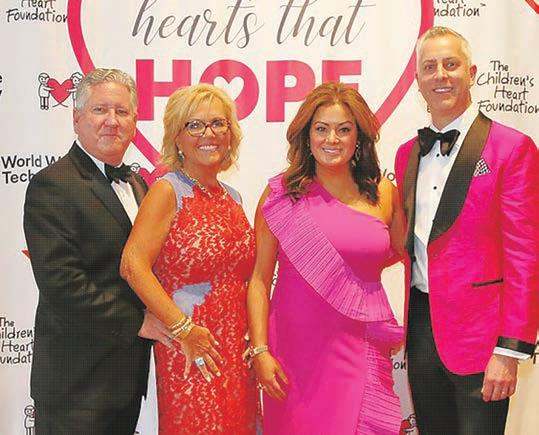 2
Photos by James J. Anderson
2
Photos by James J. Anderson
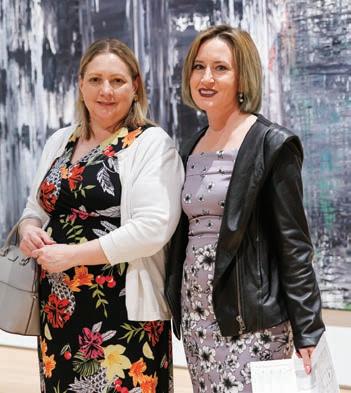
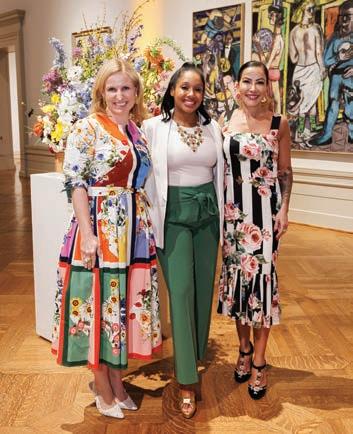




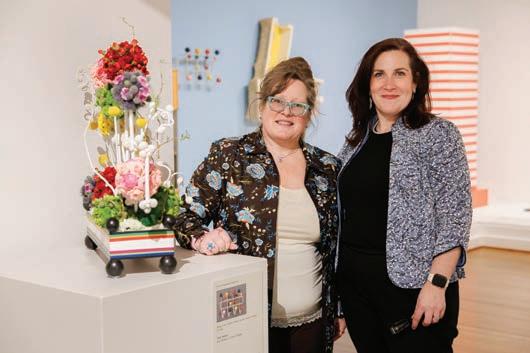

Attendees were able to get a first look at the stunning floral creations during the 2023 Art in Bloom preview party March 2 at the Saint Louis Art Museum. The party featured fine food, bubbles, and live music in the museum’s Sculpture Hall. More than 24,000 visitors attended the weekend-long festival in which area floral designers were invited to creatively interpret works of art from the museum’s collection.
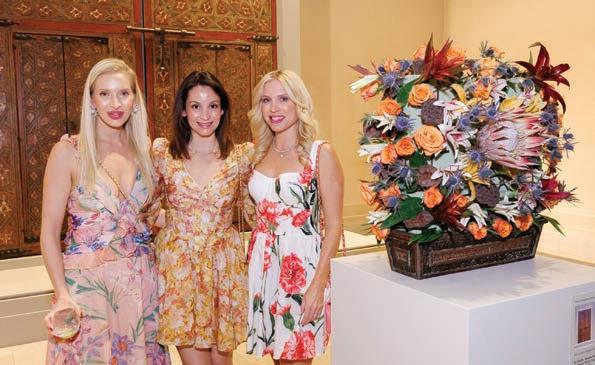


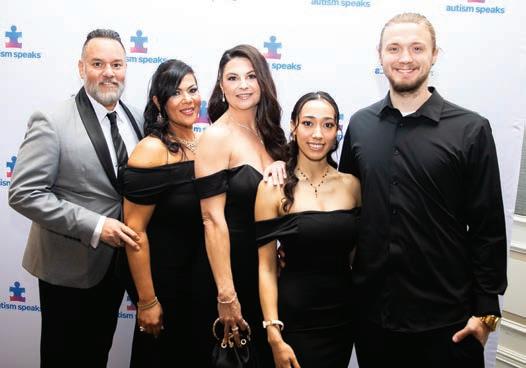
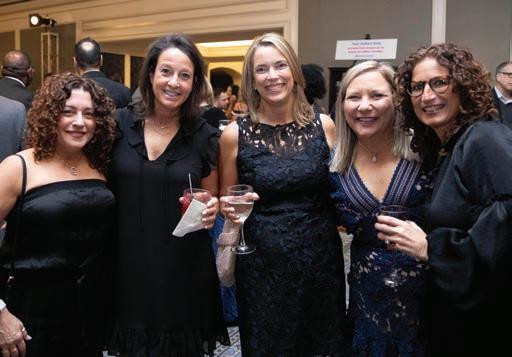




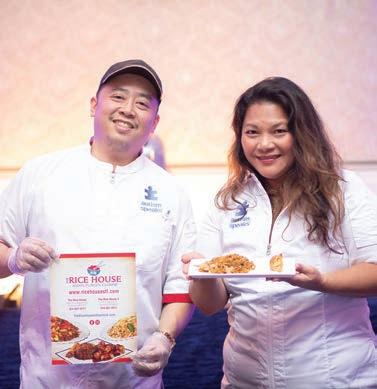
Autism Speaks St. Louis celebrated its 11th annual Chef’s Gala on March 10, at the Ritz-Carlton. The evening began with a cocktail reception and tasting buffet prepared by 12 St. Louis top chefs. The gala included a silent and live auction and a short program to showcase the mission of Autism Speaks and celebrate this year’s honoree, The Yawitz Family. The 375 guests raised over $360,000. Proceeds from this event help promote solutions for the needs of people with autism and their families and will support our continued commitment to create a kinder, more inclusive world. The event was emceed by FOX 2 Morning News Anchor, Margie Ellisor and the auctioneer was Adam Jokisch. Event co-chairs were Aaron and Sidney Plaza.
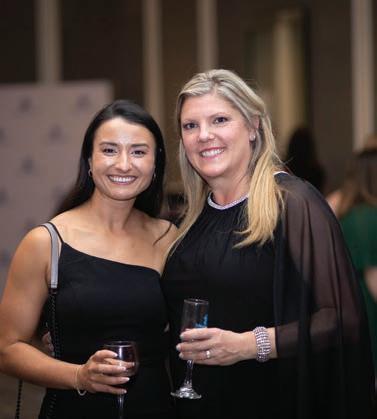 Photos by Kyle Simmons
Photography
Photos by Kyle Simmons
Photography



It was a sold-out crowd honoring founding Sheldon supporters Sue and Irl Engelhardt and the Engelhardt Family Foundation on March 25 at The Sheldon. The event, underwritten by the Steward Family Foundation and chaired by Michael and Susan Scully, featured the international sounds of Pink Martini. Patrons first gathered in The Sheldon Ballroom for specialty cocktails sponsored by Trivers and hors d’oeuvres by Butler’s Pantry. Guests then moved to the newly renovated Konneker Room for dinner, a live auction and a fund the need. The evening raised over $250,000 to support The Sheldon.



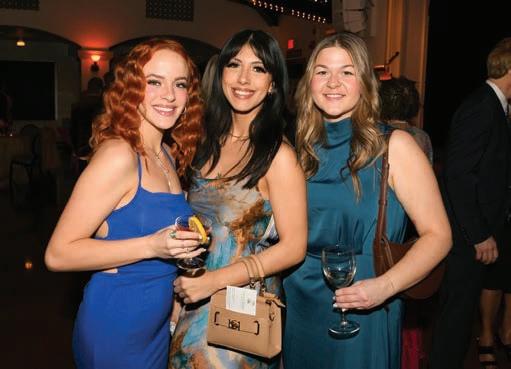



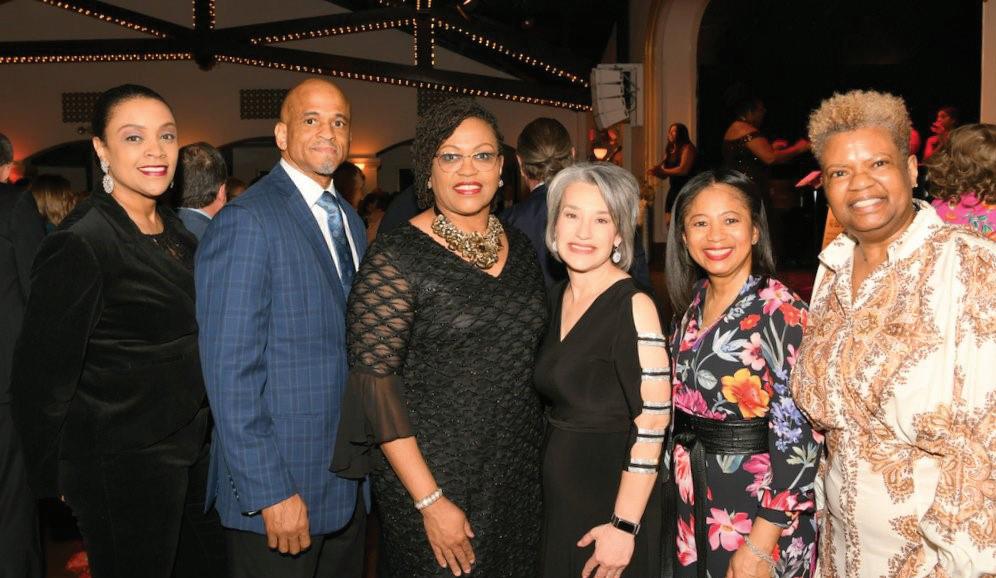 Photos by Ray Marklin
Photos by Ray Marklin










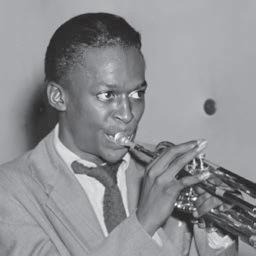









































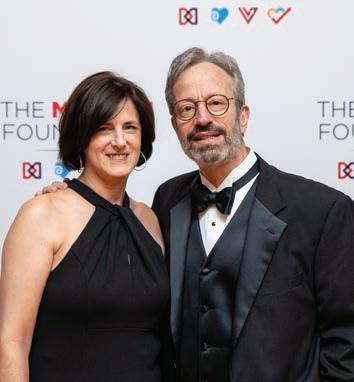
The Marfan Foundation honored Dr. Sanjeev Bhalla of St. Louis with a Hero with Heart award and Dr. Reed E. Pyeritz, PhD, with a lifetime achievement award at the 14th annual Heartworks St. Louis Gala at the Four Seasons Hotel on March 11. The evening was hosted by Dr. Alan and Rebecca Braverman. Since its inception in 2009, Heartworks has raised more than $3 million for life-saving and life-enhancing programs and services for the 200,000 people in the U.S. and around the world living with Marfan, LDS, VEDS, and other genetic aortic and vascular conditions.

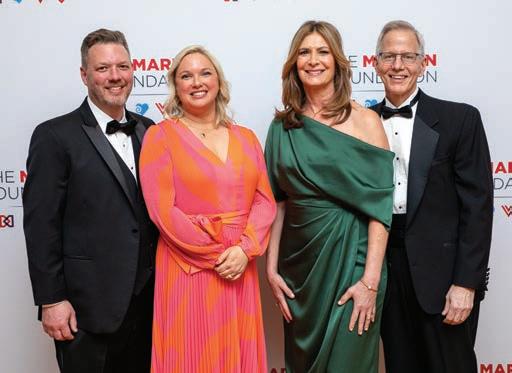

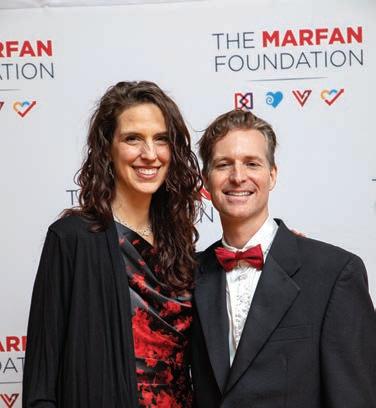

 Photos by Tim Joyce Photography
Photos by Tim Joyce Photography






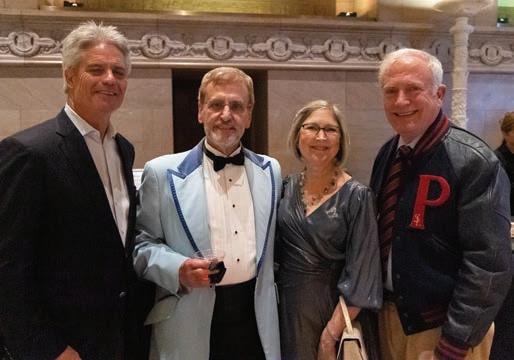
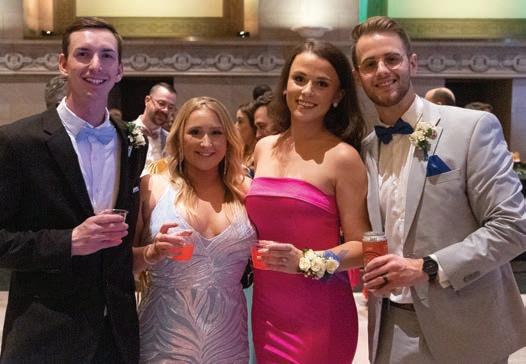
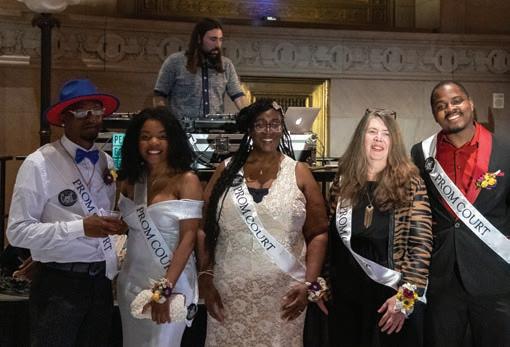


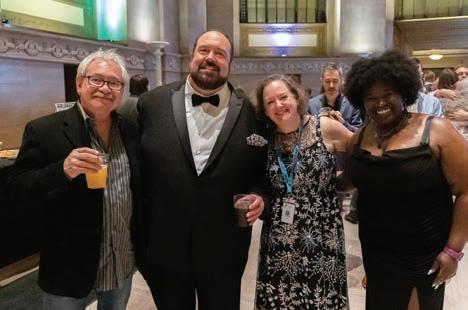

The St. Louis Public Library hosted an adult PROM on March 31 at Central Library to celebrate and support the library’s upcoming exhibit, PROM Magazine: Where Did You Go to High School? More than 200 guests enjoyed a fun night dressed in prom attire, listening to the iconic radio personality Johnny Rabbitt call out hits from past decades while professional dancers led various dances including the twist, jitterbug, the Watusi and the stroll. The exhibit, which runs from April 10, 2023 through January 7, 2024, is free and open to the public during normal library hours. The exhibit highlights the unique publication, PROM magazine, which was published from 1947-1973 in St. Louis and featured life within area highs schools.
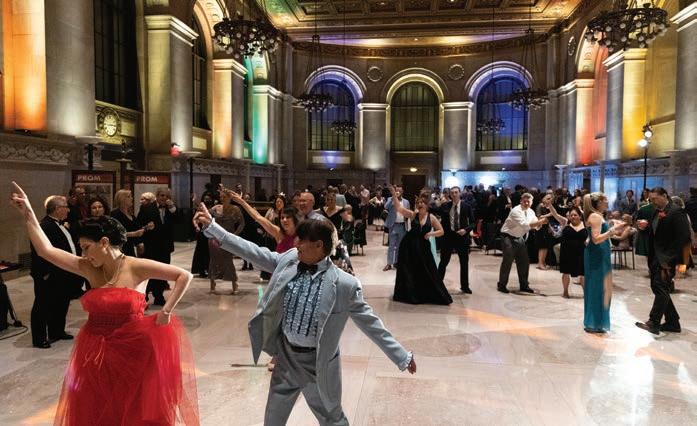 Photos by Dylan Dilworth, St. Louis Public Library
Photos by Dylan Dilworth, St. Louis Public Library


